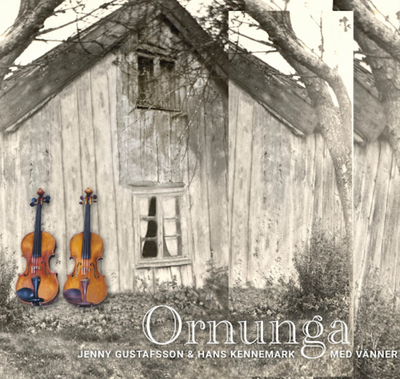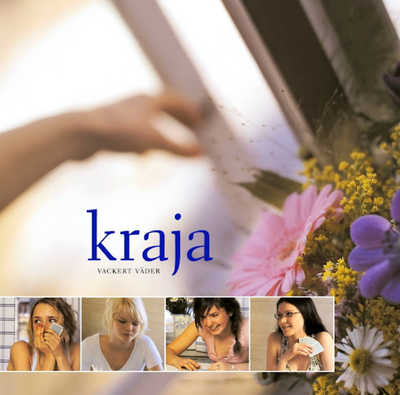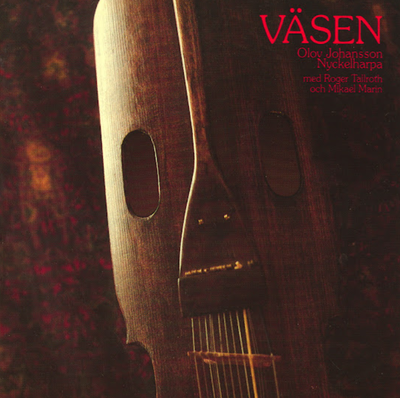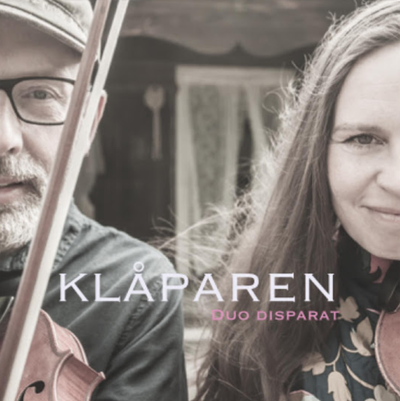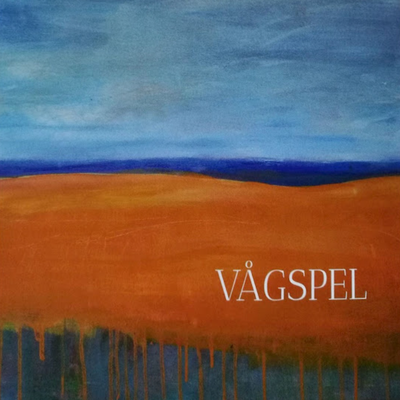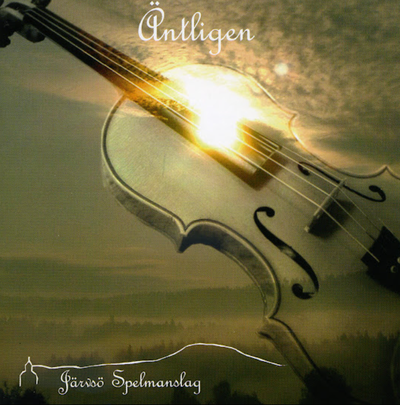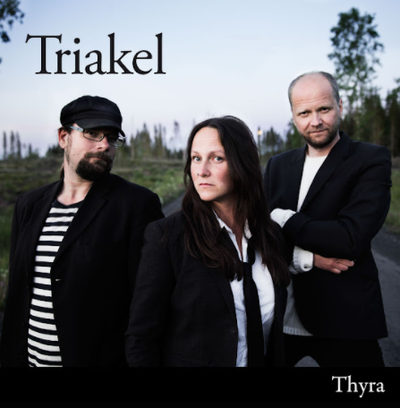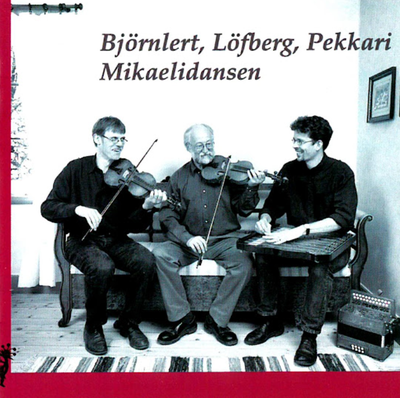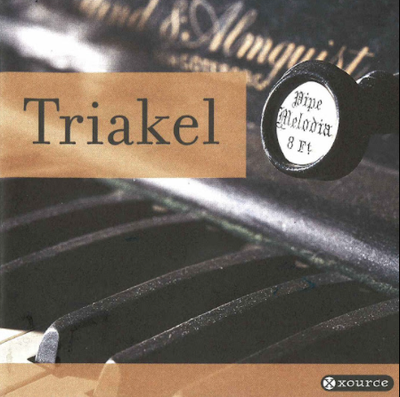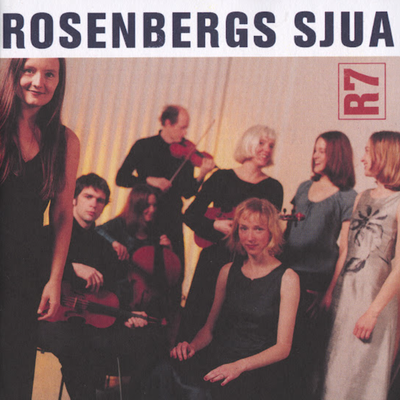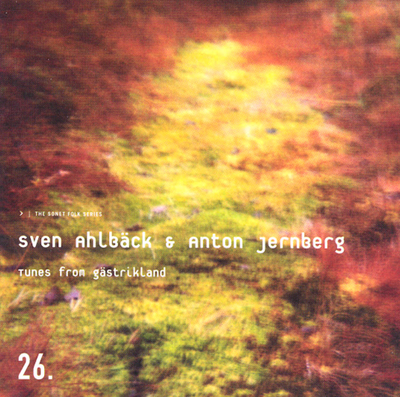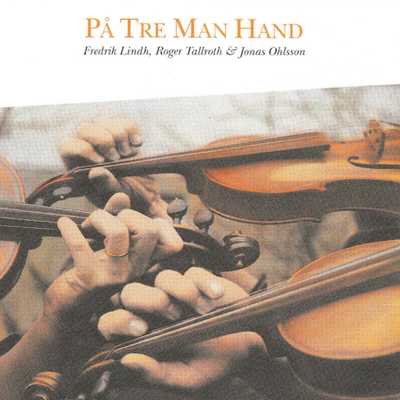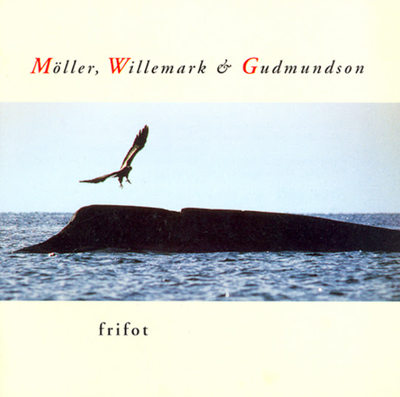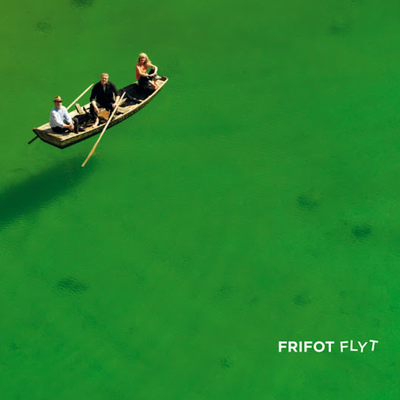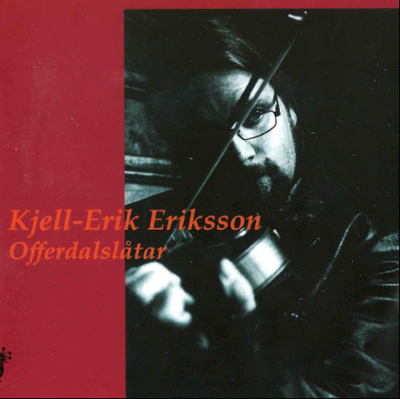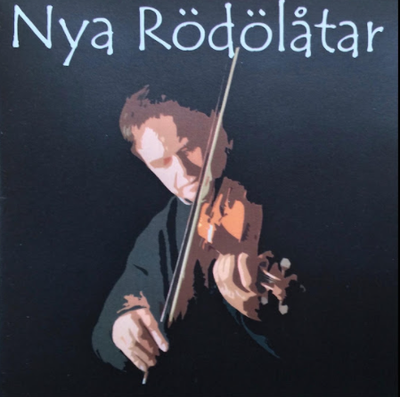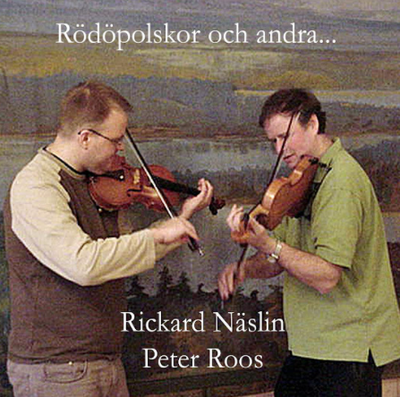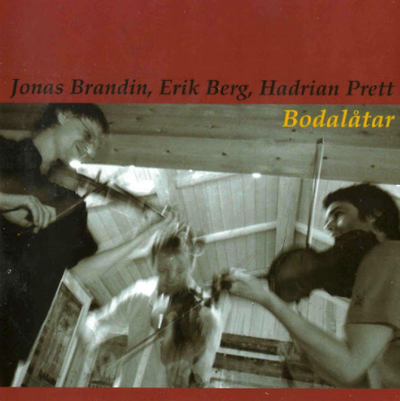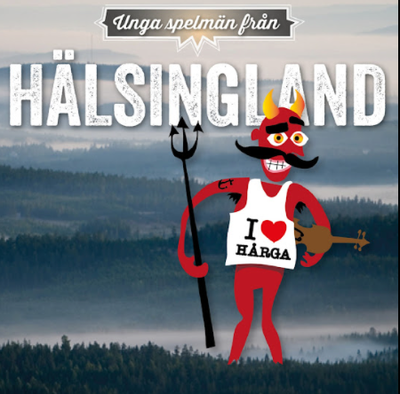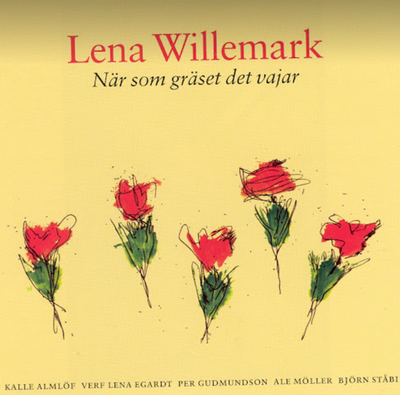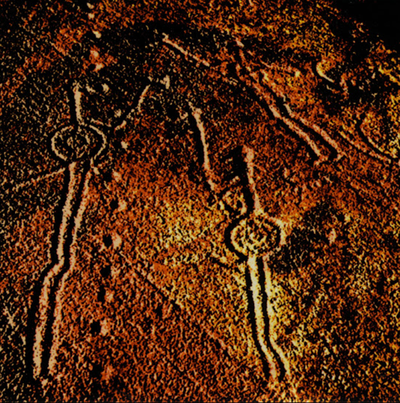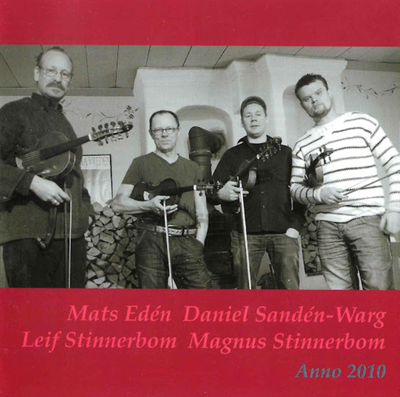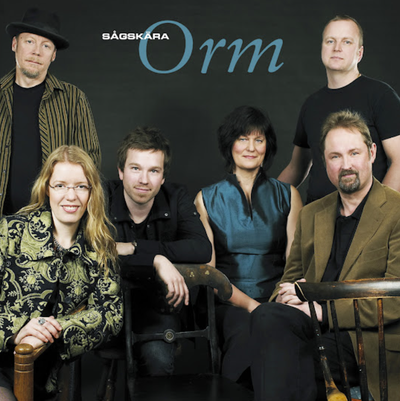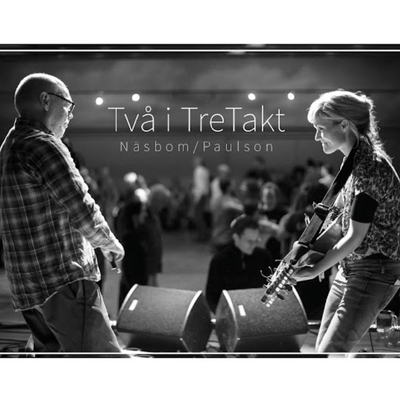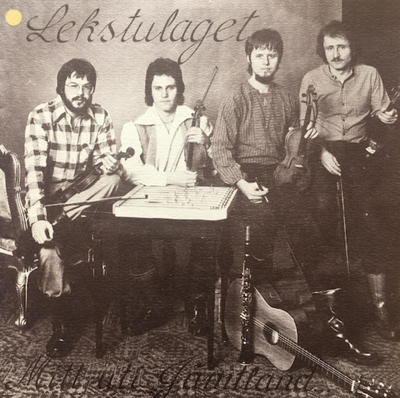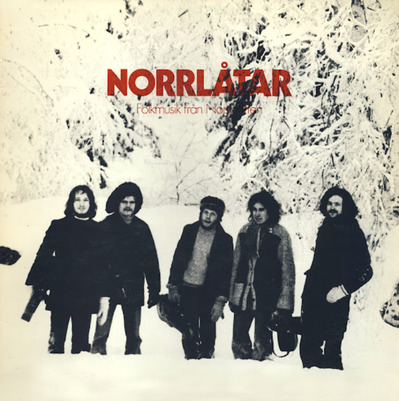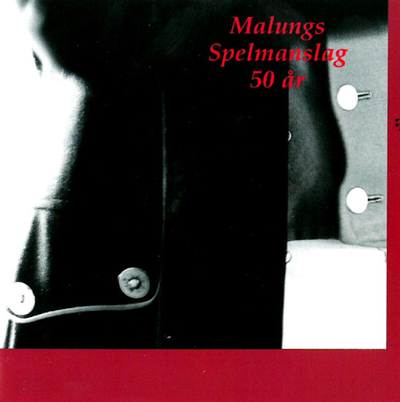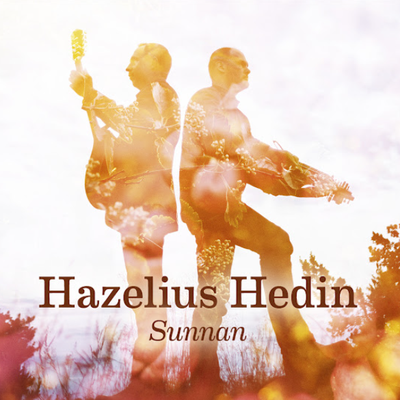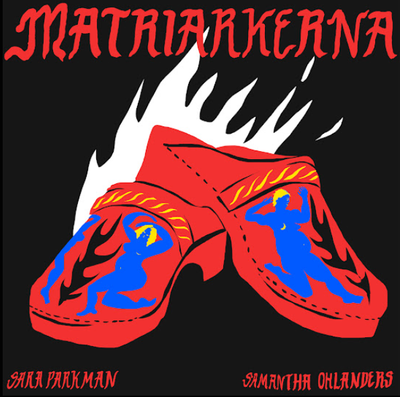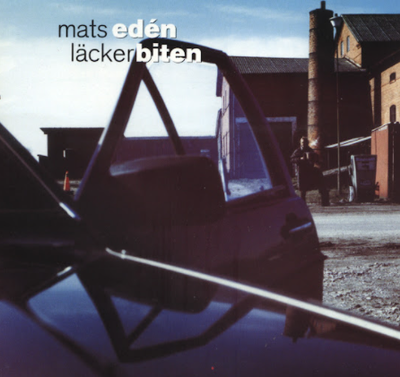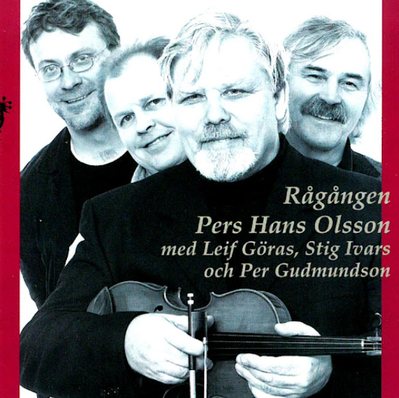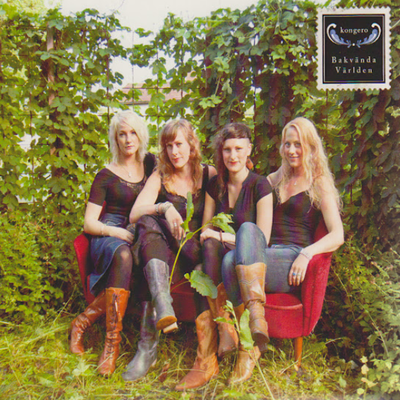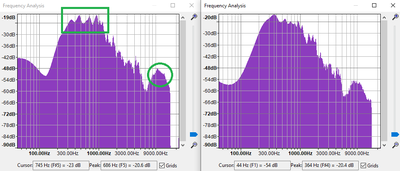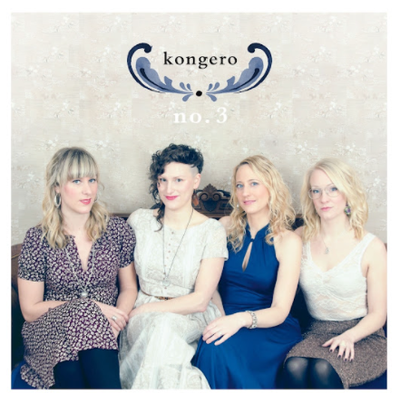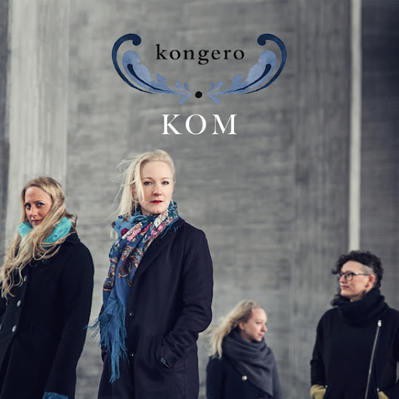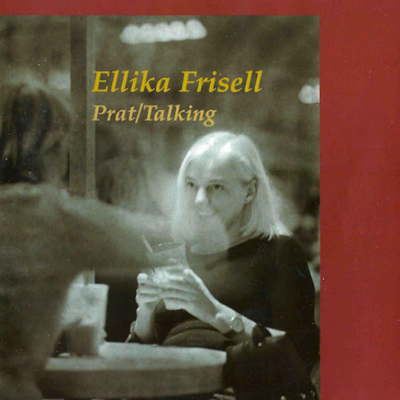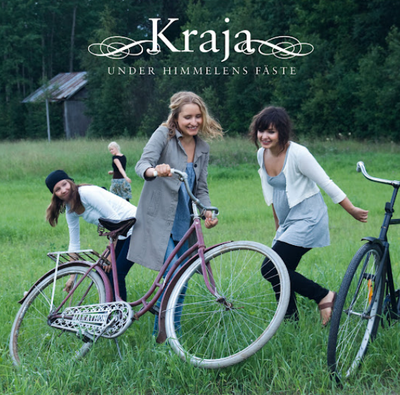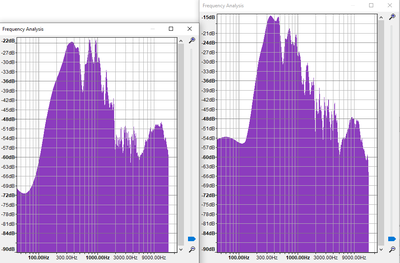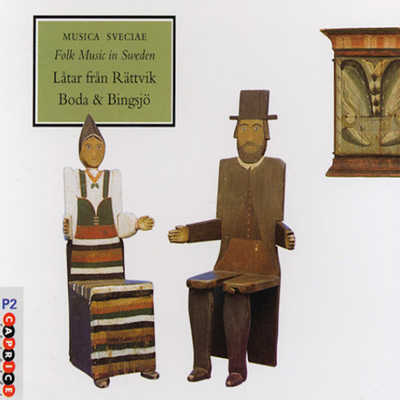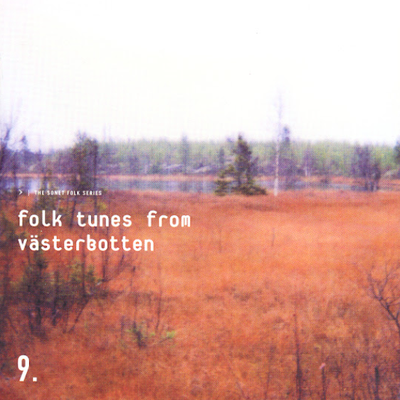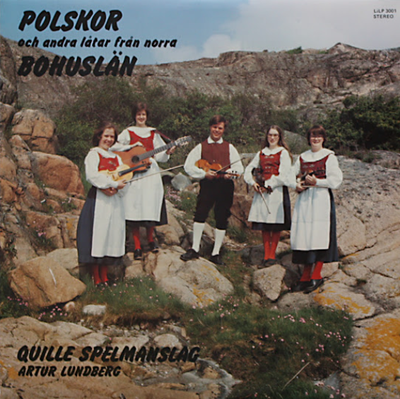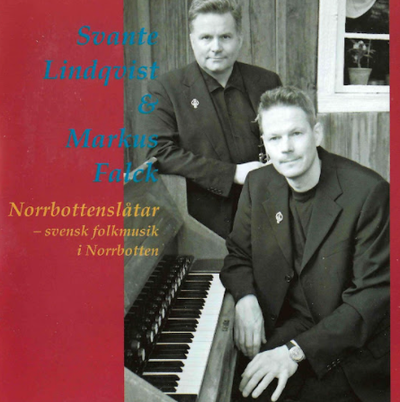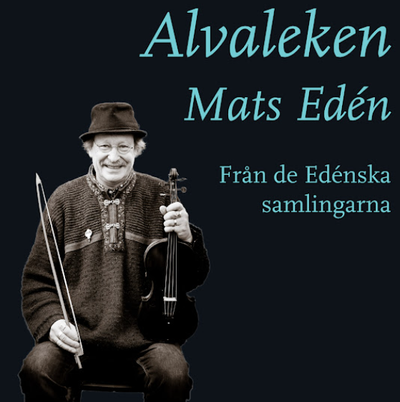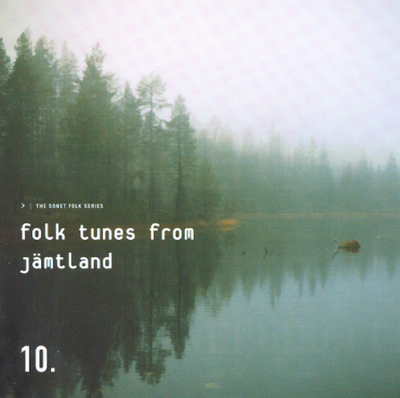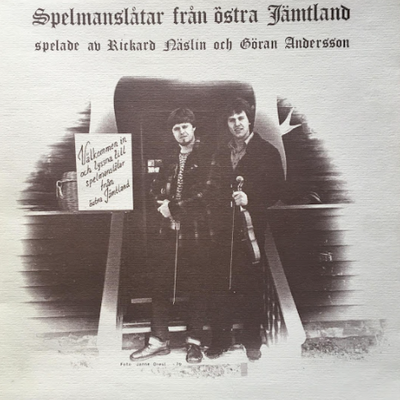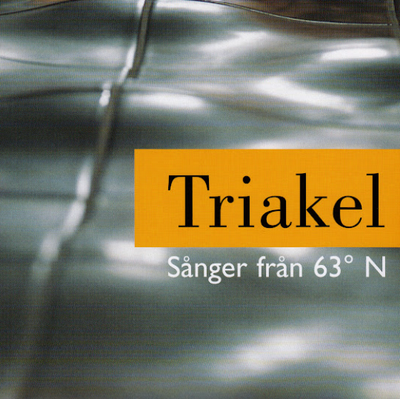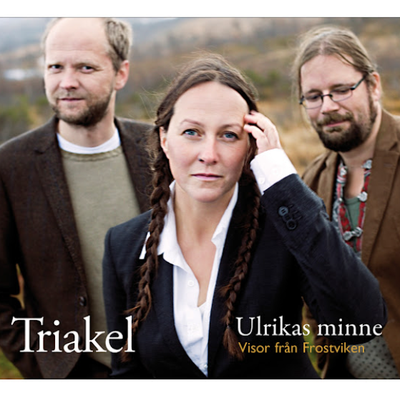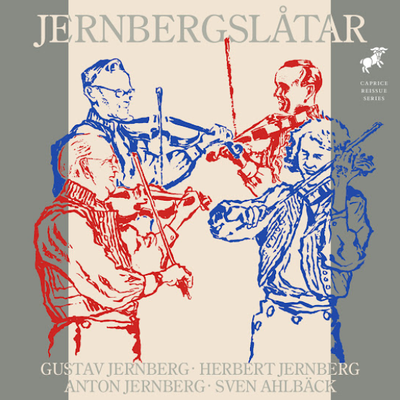| Main bedroom painted |
PVC on the first floor |
Jens Folk Music Playlist 1
Hi, I am Jens Malmgren, and this is my Swedish Folk Music List.
The music on this list can best be played with music.youtube.com. For that, you will need a paid subscription to YouTube. You can also play each song separately, but (then) you will receive ads, etc.
The playlist is also available on Spotify. 44 tunes were not available on Spotify so that list is slightly shorter.
All 744 tunes together are 32 hours of music!
If you are new to this type of music, I have some advice on listening. This best listens actively. Tap with your feet, bob with your head to the music, whistle with the tunes. It is not enough to listen for just one or two hours. This music is intended to be listened to all day long for several weeks, preferably on shuffle. When you do this, you will notice that something has happened to you. You are happier and more fit. You can play this music while working in the office and occasionally get up and dance a little. You are ready to learn more about the music in the next phase. Figure out the meaning of words. Read about the tunes here; follow the links. Then you are ready to go to Sweden, preferably in the summer. You will go to the festivals, meet the people playing these tunes. Perhaps even try Swedish Snus and dancing Polska at the same time!
The albums on this list are often added in random order, but I kept that order here. The first album I added were Ornunga with Hans Kennemark and Jenny Gustafsson.
I collected stories about each album. It is personal stories and things about the artists or the place they come from. This is not just a list of the music; I reveal the secrets of the Swedish music and dance tradition. I point to exciting reading about places, traditions, etc. Sometimes I give you the translation of information that previously has not been available in English.
There are words in Swedish I have not translated because translating the word loses the original meaning. Don’t worry, here is a list of the words and their explanation.
|
Buskspel |
It is a spontaneously improvised music interplay often outdoors, for example, at a Hembygdsgård. The word busk literally means bush. The term indicates scattered bushes in the terrain as the perfect area for informal gatherings of playing Spelmän. It is funny because if there is only one giant lawn, there will not be many Buskspel. In that case, the gatherings happen behind the corner of a house. The brave and attention-seeking Spelmän are standing in the middle of the lawn. |
|
Bygdegård |
Another name for Hembygdsgård. |
|
Folkdansgille |
Likewise, musicians are organized in groups; also dancers are organized. A Folkdansgille is a group of dancers who dance typical Swedish dance types. See the section The dances. |
|
Hembygdsgård |
This is the local open-air museum you find in many villages of Sweden. A good Hembygdsgård has scattered bushed suitable for Buskspel. |
|
Riksspelman |
That is a Spelman that won the Zorn badge. You are an excellent Spelman when you win that medal. Gold medals are reserved for people promoting and supporting the tradition of Swedish folk music. |
|
Spelman |
It should be translated fiddler, but then fiddler has another tradition than Spelman. This is the singular version of the word. Although you might think the word has a gender bias in Sweden, Swedish has decided that traditionally gender-biased words are used for all genders. For example, Sjuksyster (A nurse, traditionally for women) is used for men and women in modern Sweden; thus, Spelman holds the same. |
|
Spelmän |
Plural of Spelman. |
|
Spelmansförbund |
This is an organization Spelmän for a larger region, usually a county. |
|
Spelmanslag |
This is a group of Spelmän. It is usually amateur musicians making the group. |
|
Spelmansstämma |
Could not find any article in Wikipedia explaining what a Spelmansstämma is in English. I will explain it here. It is a festival where you are not necessarily just listening to the artists at a stage. You are supposed to bring your instrument and make music yourself as well. There are stages where more established spelmän can play their songs. At a Spelmanstämma, there can be courses, meetings, and other things when people with the same interest gather. There is Buskspel, meaning people are spontaneously gathering to play tunes together. A Spelmansstämma is a perfect reason for having a party as well. |
In some places in this playlist, I mention a course at Austerlitz in the Netherlands. This is a course in playing Swedish folk music organized by Michelle van Baaren (Also a member of the Hunebend and Duivel band) and Marieke van der Hoek. These two ladies have organized this course for many, many years, but they have no website for the courses at Austerlitz. They might have a FaceBook page about the courses, but I don’t use FaceBook (so much), so I don’t know. There is no need for a website because the courses are almost always fully booked anyway. They bring various Swedish folk music teachers to the Netherlands for a weekend each year, and there is also a possibility to dance to the music.
In this list, I first write the name of the group followed by a semicolon and then the album’s name. This works well except for collection albums. For collection albums, I only write the name of the album.
Lapp-Nils
In several places on this playlist, I am mentioning Lapp-Nils. The link goes to a Swedish page about Lapp-Nils. It was a Spelman of Sapmi origin born 8 May 1804 in Hallen, and he died 18 April 1870.
His father died when he was still young, and the mother then moved to Norway with his son. In Norway, Lapp-Nils learned to play the violin, and then he moved back to Sweden as a young adult. He earned his living as a yard seller by selling Sapmi craft products throughout large parts of south Norrland.
He also went to Stockholm and earned a living as a street musician together with a friend.
In 1837 he got married to a Sapmi girl Lapp-Kersti, and they moved to a house in 1849 that got the name Lapp-Nils Torpet. Several pupils came to Lapp-Nils, learned how to play his tunes. As payment for the lessons, they had to help with bringing in hay and other tasks.
The dances
Here are the sorts of dances/tunes in this playlist.
March, Brudmarch, Brudlåt, Gånglåt, Vandringslåt
Tunes made for walking. I talk more about melodies for walking at the album Malungs Spelmanslag, Malungs spelmanslag 50 år. These songs are played in 4/4 tempo.
Polska
When you glance over the playlist, it looks like there is one dominant type of Folk music in Sweden called Polska. This is, however, not the case. Polska comes in hundreds of variations and subvariations, and it is a pair dance played in 3/4 tempo. The variations of these dances and tunes are often based on traditions from a village or area. Bingjöpolska is a Polska as it was danced and played in Bingsjö and so on. The three parts of the tempo are not evenly distributed in the different variations. Usually, one of the parts is accentuated in Polska.
Vals
This is the Waltz as we all know it. Several variations exist on this dance form, but there are not as many variations as Polska. The music is played in 3/4 tempo. For a Waltz, the three parts of the tempo are usually evenly distributed.
Mazurka
This pair dance originated in Poland. It is played in a 3/4 lively tempo.
Hambo
This pair dance originates from Sweden, and it is played in a 3/4 lively tempo. There is a strong accent on the first beat.
Schottis, Räjlender, Reinlender
The Schottis dance is danced to music played in 2/4 calm tempo. It is said that this dance originates from Bhömen.
Polka
This dance emerged in Bhömen around 1820, and the name Polka comes from the Czech language Pulka meaning half step. The music is played in 2/4 tempo in about 60 beats per minute.
Polkett
This is a Swedish variation of Polka; hence it is danced to 2/4 tempo. The name Polkett perhaps refers to a tiny Polka?
Engelska, Kadrilj, Kvadrilj
Originated from England and has a 2/4 tempo.
Långdans
In this dance, all participants hold hands and form a long chain. Then the leader creates formations like spirals and loops. The chain needs to find creative solutions to knots to keep moving. It is very entertaining! I have danced this sort of dance at the Korrö festival.
Halling
It is a dance said to originate from Norway. It is danced solo in 2/4 tempo.
Springlek
My hypothesis is that this is an informal sort of dance. Something the kids or grownups could just dance as they felt like. When the Spelman called it a Springlek, he perhaps had more freedom in how he decided to play the tune. This is unclear; I have no confirmation of this theory.
Provinces of Sweden
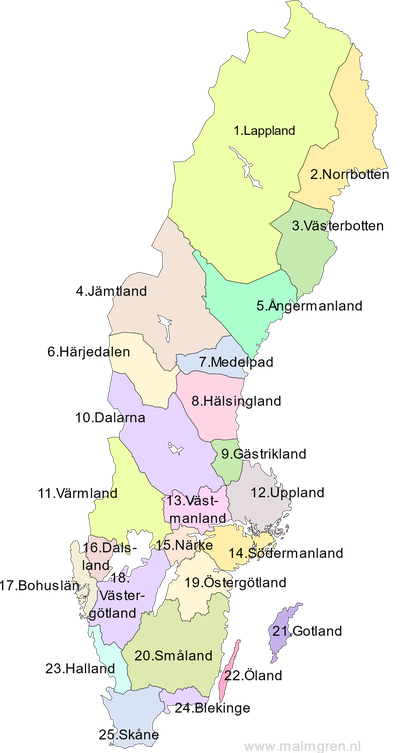 Here is a list of the music in this playlist ordered after the province where this is known. Sometimes when the album represents several provinces, I just pick one. The representation can be based on the origin of the Spelman or the origin of the tunes. For some albums, it is a bit random, actually.
Here is a list of the music in this playlist ordered after the province where this is known. Sometimes when the album represents several provinces, I just pick one. The representation can be based on the origin of the Spelman or the origin of the tunes. For some albums, it is a bit random, actually.
- Lappland
- Norrbotten: Norrlåtar; Folkmusik från Norrbotten, Svante Lindqvist & Markus Falck; Norrbottenslåtar - Svensk folkmusik i Norrbotten
- Västerbotten: Kraja; Vackert väder, Kraja;Under himmelens fäste, Folk Tunes From Västerbotten
- Jämtland: Triakel; Thyra, Triakel; Triakel, Kjell-Erik Eriksson; Offerdalslåtar, Rickard Näslin; Nya Rödölåtar, Peter Roos & Rickard Näslin; Rödöpolskor och andra..., Lekstulaget; Mitt uti Jämtland, Folk tunes from Jämtland, Rickard Näslin och Göran Andersson; Spelmanslåtar från Östra Jämtland, Triakel; Sånger från 63 N, Triakel; Ulrikas minne (Visor från Frostviken)
- Ångermanland: Sara Parkman & Samantha Ohlanders; Martriarkerna
- Härjedalen: Anders Thunell & Olof L Mjelva; Uppspelt
- Medelpad: Kongero; Bakvända världen, Kongero; No 3, Kongero; Kom
- Hälsingland: Järvsö spelmanslag; Äntligen, Unga spelmän från Hälsingland
- Gästrikland: Sven Ahlbäck & Anton Jernberg; Tunes from Gästrikland, Jernbergslåtar
- Dalarna: Fredrik Lindh, Roger Tallroth & Jonas Ohlsson; På Tre Man Hand, Frifot; Frifot, Jonas Brandin, Erik Berg & Hadrian Prett; Bodalåtar, Lena Willemark; När som gräset det vajar, Malungs Spelmanslag, Malungs spelmanslag 50 år, Per Hans Olsson, Leif Göras, Stig Ivars & Per Gudmundson; Rågången, Ellika Frisell; Prat / Talking, Låtar från Rättvik, Boda & Bingsjö
- Värmland: Duo Disparat; Klåparen, Mats Edén, Daniel Sandén-Warg, Leif Stinnerbom & Magnus Stinnerbom; Anno 2010, Mats Edén; Läckerbiten, Mats Edén; Alvaleken
- Uppland: Väsen; Väsen
- Västmanland: Torbjörn Näsbom & Josefina Paulson; Två i tretakt
- Södermanland: Rosenbergs Sjua; R7
- Närke: It would have been wonderful to find an album with Pehr Falkenström, but he still needs to make that album.
- Dalsland:
- Bohuslän: Quille Spelmanslag; Polskor Och Andra Låtar Från Norra Bohuslän
- Västergötland: Hans Kennemark & Jenny Gustafsson; Ornunga, Vågspel; Vågspel
- Östergötland: Pelle Björnlert, Bengt Löfberg & Erik Pekkari; Mikaelidansen
- Småland: Sågskära; Orm
- Gotland
- Öland
- Halland
- Blekinge
- Skåne: Hazelius Hedin, Sunnan
Hans Kennemark & Jenny Gustafsson; Ornunga
This is a duo with Hans Kennemark and Jenny Gustafsson. Actually, Ornunga is a place, and the tunes that Jenny and Hans are playing are coming from this place. More than that, this is a research project into how the music sounded from Johan Albert Pettersson, not the industrialist but the violinist. In 1929, a folk music commission sent Olaf Andersson to register Johan Albert’s music. The tunes were published in a book series Svenska Låtar of Västergötland. Here Hans and Jenny interpret the notes and play these tunes.
Hans taught me A-mollpolska when he held a course in Austerlitz in The Netherlands. I like that tune much.
Östgårdspolska is exuberant and uplifting!
|
Finsken (feat. Stefan Wingefors, Harald Kennemark & Emma Johansson) |
|
Brudmarsch från Remmenedal (feat. Stefan Wingefors & Harald Kennemark) |
Kraja; Vackert väder
It is a group of pretty girls from Umeå singing pretty music. The members are Eva and Lisa Lestander, Frida Johansson and Linnea Nilsson. They are singing traditional songs acapella. They sing many songs about life in Sweden long ago. There is hardship but also love and desire described in the songs.
The band’s name means "the place you long to be" in Sami, and it is also the name of a holiday resort outside the city of Arjeplog. Go there, it looks nice! Lisa and Evas grandparents lived near to that resort.
Kraja got a couple of songs about church stuff, but I excluded them from my list. The songs I do include have a sparkling vital sound. This is something that makes me happy when I listen to this group.
My wife and I studied at Umeå University. It had been charming to meet the Kraja group IRL, but I think we missed them by a couple of years.
Väsen; Väsen
The band comes from Uppsala and consists of Olov Johansson, Roger Tallroth, and Mikael Marin. It was founded by Roger Tallroth, and he left the group in 2020.
My wife and I went to a music course by Roger at Austerlitz in the Netherlands a couple of years ago. I had to retune our instruments for some of his songs. That was difficult. He teaches music at the royal college of music in Stockholm and the University of Örebro.
On this album, the Nyckelharpa is prevalent. This instrument has a beautiful polyphonic sound but sometimes lacks the punch.
Duo Disparat; Klåparen
This is a duo of the riksspelman Johanna Karlsson from Helsingland and Anders Norudde from Värmland. Not all tunes they are playing are traditional tunes, but they are composed in the old tradition, making their music fit this list very well.
You can hear them stomp their feet while playing. That is the natural percussion you hear on more albums on this playlist. This is not an omission or mistake; it is part of the tradition. I like that because that is the natural sound when a violinist plays Swedish folk music.
Anders is a member of Swedish violin makers in the Italian tradition. He plays many different instruments, such as the violin and the Hardanger fiddle. It sounds (to me) as if he placed a clothespin on the violin’s bridge on some tunes. It gives the tunes intense and peculiar energy to the music. Either that or another kind of instrument; is unclear to me. There is a wedding march called led heavy (Blytung brudmarch), and it has this sound. Anders has background rock music, so perhaps there is a connection there.
Another interesting fact is that Anders also started the group Hedningarna together with Hållbus Totte Mattson and Björn Tollin. Now comes the part I don’t understand: On Anders’s page on Wikipedia, it is said that Hedningarna wrote a large part of the music to Den stora vreden, with no mention of Ale Möller or Lena Willemark. On the Wikipedia page of Den stora vreden Hedningarna are only muscicians and Ale Möller put the music together. There are different stories here.
Later on this playlist, I mention the theater play Den stora vreden because there is a poster of this theater play on the album cover Anno 2010 with Mats Edén, Daniel Sandén-Warg, Leif Stinnerbom & Magnus Stinnerbom.
Vågspel; Vågspel
This is a duo with Alice Klint and Kristin Kennemark from Västergötland. I suppose Kristin is married to Hans from the band "Ornunga" with Hans Kennemark and Jenny Gustafsson, also on this playlist. This might be why they also play songs from Johan Albert Pettersson. It appears that initially, Alice and Kristin were neighbors. That is how they found each other.
The performance gives me a slight feeling of a chamber orchestra, so it is very sophisticated. This is folk music with high heels and a touch of expensive perfume.
Järvsö spelmanslag; Äntligen
A spelmanslag is a music band of amateur musicians from a specific region. It is often within spelmanslag around the country that the music tradition is held alive. Järvsö is located in Ljusdal municipality.
Besides many violins, You can hear flutes, guitar, and bass on these songs. I think that the group presents these songs very well.
Some (other) spelmanslag likes to make their presentations into regular concerts and introduce modern elements, such as piano, etc.; those songs don’t qualify on this list. I think bands introducing modern elements want to be likable. In that process, they lose their roots. However, Järvsö spelmanslag is doing it very well in this album. The bass and guitar are there, but it is not dominating the tunes.
The group plays its full register of instruments and musicians, creating clever arrangements that present various angles of its music.
For example, listen to Halls Lilla visa starting like a tiny rippling water creek from the mountains on a sunny spring morning. The creek meets up with a flood!
Triakel; Thyra
This band is from Jämtland. The members are Emma Härdelin and Kjell-Erik Eriksson and Janne Strömstedt. Kjell-Erik is also represented in this playlist as a solo at Kjell-Erik Eriksson; Offerdalslåtar.
I really like that the group comes from Jämtland. I like to hear Emma singing in the Jamt dialect. I grew up in Jämtland. It was not an especially easy place to grow up in. For the people of Jämtland, you have to be native for at least five generations before you fit in. My parents came from Stockholm, so that was not a success. I like the music from Jämtland, though.
Pelle Björnlert, Bengt Löfberg & Erik Pekkari; Mikaelidansen
This band’s name is just a list of the members; it is what it is. That is also how they are playing, the songs as they are.
Pelle is a Rikspelman and a music tradition researcher. His specialty is melodies from Småland and Östergötland. Bengt plays music from Småland.
Erik Pekkari is playing the accordion. There is a "conflict" between accordions and violins in Swedish folk music. This partly relates to the fact that the accordion has a lot of volumes and can easily dominate the music. Erik Pekkari is playing very well with the two other violinists on this album. This playlist is centered around the violin, but I think Erik Pekkari is doing an excellent job here, so he stays on this list.
Now we get to the delicate question: What province is this album representing? We have both Småland and Östergötland. Ydre is Östergötland and Loftahammar is Småland. Tuna is all over the place; that is a draw. The album contains tunes from Pelle Fors. Born in Småland and died in Östergötland. Since the album is a draw between Småland and Östergötland, I decide that this album belongs to Östergötland because of Pelle Fors. I might regret this for the rest of my life. One day Pelle Björnlet calls me and wants me to categorize this album as a Småland album.
|
Stenbockens marsch efter Pelle Ror / Polska efter Sven Donat |
Triakel; Triakel
This was the first album that Triakel released in 1998. On the album, there is this song about the birthday party "Födelsedagsfesten." The start of the tune goes:
There lived a farmer in the land of the north celebrating his 50 years. Even if the road was terrible and complicated, the guest came in the hundreds. They had planned for a party for three weeks, there was food and drinks for everyone. You had to be shamed for how much there was.
The refrain goes: Tralalala, cheer and draw the knives because you need to be happy when it is a birthday party!
The refrain gives away that this is some kind of old version of a Dogma movie or Nordic Noir. It goes wrong, terribly wrong. As the song progress, people are dying. The house caught fire. The wife of the farmer is thrown into the well. The last thing she does is lose the grip of the edge, and then everything is silent.
Magnificent storytelling.
More songs are telling fantastic stories on this album. Emma Härdelin is singing them with the great support of the violinists Kjell-Erik Eriksson and pump organist Janne Strömstedt. Emma Härdelin is singing with R sounds rumbling and rolling like steel marbles tumbling into a wooden bucket.
The song Mjölnarens måg has a cunning text. If you take the words for the literal meaning, it is a harmless story about two people putting the third person in a sack. The sack is brought to the miller Beck. The miller put the sack next to his daughter’s bed because it was safe from rats and rain. When it got dark, the sack started walking. There is noise, but "Dad, don’t light a candle; it was just the cat who catches a mouse." The miller’s wife answered, "That cat had boots with buckles." The daughter then asks the wife to be quiet and ends the song. If you happen to know that the word mouse has a double meaning, you see, it is a less harmless story!
Rosenbergs Sjua; R7
This is a Stockholm-based band that belongs to both Södermanland and Uppland. That does not mean they are any lesser than other bands on this playlist. "Zero Eight"-people (08 is the phone extension for Stockholm) are no less worth than the people of the rest of the country. On the contrary, 08ths are self-confident and gladly brag about their advantages. I am not saying that Rosenbergs Seven is like that. Obviously, living near Sweden’s economic and political center makes anyone suitable for bragging.
The members of this band are Annika Wijnbladh, Sven Ahlbäck, Ellika Frisell, Eva Åstrom-Rune, Hadrian Prett, Sofia Sandén, Susanne Rosenberg, and Ulrika Bodén.
The members are like a catalog of Swedish music authorities. Susanne Rosenberg is a professor of folk music!
My wife and I attended a course at Austerlitz with Sven Ahlbäck. He is a violin teacher at the Royal University College of Music in Stockholm. Sven is married to Susanne.
Sven Ahlbäck & Anton Jernberg; Tunes from Gästrikland
This is the Duo of Sven Ahlbäck and Anton Jernberg, and Sven is also a Rosenbergs Sjua. Who Anton is, is a bit of a mystery. Later on this playlist at Jernbergslåtar, I figured out who Anton is, there you find the whole story.
On this album, they are playing tunes from Gästrikland.
What is up with Adventsllåten? It sounds as if it is a recording from an exercise. It is missing the self-confidence in the play. Some tunes of the album are played in duo with one voice. Usually, the second violin plays another arrangement but not on this album. That makes it a unique album, more raw and genuine in a way.
Fredrik Lindh, Roger Tallroth & Jonas Ohlsson; På Tre Man Hand
This is a band with the name just listing the members. We have more of those on this playlist. This album has the member listed in a different order for each tune, which is very democratic!
Roger that also played in the group Väsen is also on this list.
Just because of the Leksand tune, I designate this album to the province of Dalarna; I might be wrong.
When you hear the tune Garbergkärringen, you might think, "what an enormous naggin tune," and then you find out the name is The Bitch from Garberg. It sounds like there is more to this story than just a tune. I will talk to Roger when I meet him next time and ask about that.
|
Tune |
Musicians |
|
Fredrik Lindh, Roger Tallroth & Jonas Ohlsson |
|
|
Fredrik Lindh, Jonas Ohlsson & Roger Tallroth |
|
|
Fredrik Lindh, Jonas Ohlsson & Roger Tallroth |
|
|
Jonas Ohlsson, Fredrik Lindh & Roger Tallroth |
|
|
Roger Tallroth, Fredrik Lindh & Jonas Ohlsson |
|
|
Jonas Ohlsson, Fredrik Lindh & Roger Tallroth |
|
|
Roger Tallroth, Jonas Ohlsson & Fredrik Lindh |
|
|
Roger Tallroth, Fredrik Lindh & Jonas Ohlsson |
|
|
Jonas Ohlsson, Fredrik Lindh & Roger Tallroth |
|
|
Fredrik Lindh, Roger Tallroth & Jonas Ohlsson |
|
|
Jonas Ohlsson, Fredrik Lindh & Roger Tallroth |
|
|
Roger Tallroth, Fredrik Lindh & Jonas Ohlsson |
|
|
Roger Tallroth, Fredrik Lindh & Jonas Ohlsson |
|
|
Jonas Ohlsson, Fredrik Lindh & Roger Tallroth |
|
|
Roger Tallroth, Fredrik Lindh & Jonas Ohlsson |
|
|
Roger Tallroth, Jonas Ohlsson & Fredrik Lindh |
|
|
Roger Tallroth, Fredrik Lindh & Jonas Ohlsson |
|
|
Roger Tallroth, Fredrik Lindh & Jonas Ohlsson |
|
|
Fredrik Lindh, Jonas Ohlsson & Roger Tallroth |
|
|
Fredrik Lindh, Jonas Ohlsson & Roger Tallroth |
Frifot; Frifot
It is better to be on free foot in the wilderness than sit on a golden chair and get food from others. This proclamation of freedom starts the first tune on this first album of the group. The freedom proclamation is followed by an intense violin tune played with such energy as if the musicians are about to take fire.
The group consists of Ale Möller (from Skåne), Lena Willemark (Älvdalen) and Per Gudmundson (Dalarna). These are heavyweight musicians in the Swedish folk music scene. This album is from 1991.
Lena is singing and plays the violin. Per Gudmundson plays violin and bagpipes.
Ale Möller, yeah. He comes with his own double axle trailer with instruments. You find anything made of wood or metal you can blow air through in that trailer to produce tones. There are harps, mandolas, and instruments called folk harps, so the unique Internet doesn’t know it.
Lena is probably singing in the Elfdalian language since she comes from Älvdalen. It is a North Germanic language spoken by 3 thousand people in the north of Dalarna. When you listen to someone speaking this language, you can pick up sounds and words from ancient Nordic, Icelandic, and even English influences in the Älvdalen language.
Frifot; Flyt
This is the sixth album of the group. In this album, the group explores their enthusiasm for Swedish folk music. This album came in 2007.
They included skillingtryck songs (Broadside ballads), but I removed those from this playlist because they did not qualify for my stringent criteria of music taste. Just joking. Did not like them, that is all. I also excluded male singing songs because male singing doesn’t qualify for this list.
The album picture looks like it is taken from a drone with the band sitting in a boat. The remarkable thing is that the water is entirely green but transparent. Is there a severe outbreak of algal blooms taking place in this lake? Lena and Per probably had their instruments with them in the boat. Behind them, not included in the photo, was probably an extra-long pram with the instruments of Ale.
I am missing the Älvdalen language on this album. Is Lena losing her roots? It is not possible to pinpoint the location of this album. Is it belonging to the Dalarna province? I don’t think so. This is an album I cannot designate to a specific province.
Kjell-Erik Eriksson; Offerdalslåtar
Kjell-Erik plays music as pure as you can get it. On this album, he is playing tunes from Offerdal, west Jämtland. Kjell-Erik is a master in portamento, sliding from one note to another without losing the distinctiveness of the tune.
Between 1178-1645 the place Offerdal was Norwegian but became part of Sweden again at the second treaty of Brömsebro. The name literally means "The valley of the river running through the wetland." Because of the difference in old Norwegian and Swedish pronunciation was thought to mean the "ritual sacrifice valley," which is a much cooler name.
Kjell-Erik is member of Triakel. He was born in Gäddede, north Jämtland in the same municipality as Strömsund, where I grew up.
|
Fäbostintans längtan till fäboden / Drömmen om Lapp-Nils av Jonas Persa |
Rickard Näslin; Nya Rödölåtar
Rickard Näslin has won the Zorn badge in Silver. He comes from Östersund, the central city of Jämtland. I remember Rickard from growing up in Jämtland. He was present at Jämtland/Härjedalens spelmansförbund. When there was a Spelmansstämma in Jämtland, then Rickard was there. Rickard was one of the members of Leikstulaget.
Jens Comén, Kjell-Erik Eriksson, Peter Roos, Ingvar Forsberg, Astrid Pullar, Gunnar Stenmark and Elisabet Grönlund are featured on this album.
This album combines tradition with new playful arrangements. Sometimes it is darn close to unacceptable, as when I noticed a Saxophone playing in one tune, I removed that from this playlist. I think I heard a clarinet, flute, an accordion, and zither, but they all played very well with the violins.
|
Acksjöschottis (feat. Astrid Pullar, Gunnar Stenmark & Elisabet Grönlund) |
|
Gånglåt Från Rödön (feat. Astrid Pullar, Gunnar Stenmark & Elisabet Grönlund) |
Peter Roos & Rickard Näslin; Rödöpolskor och andra...
Rickard is well known to the music scene of Jämtland. Peter is from Hackås and a little less known.
You might miss the beautiful stomping with the feet on this album unless, if you got a subwoofer or good headphones, you could hear the natural percussion living in the bass section of the music. They end a tune by saying "Yes" triumphantly! These are the details making the music alive. In tune Förstampen, the stomping is part of the tune as well!
Some of the tunes don’t have the highest quality; there are high pitch glitches. Rödöpolska has that very much, so I removed that from the playlist.
Peter Roos is a little difficult to find information about. He currently has no Wikipedia page about himself, although he is known in the music scene. I found an article about him in the newspaper Länstidningen from 2019, writing about winning a scholarship from Bröderna Lindquist’s trust of 30 thousand Swedish crowns. He grew up in Hackås and studied music in Malmö. He is also playing other music genres in various bands. During the world cup in biathlon 2019, he performed a folk music act received well at the opening ceremony.
From this story, I conclude that if you want to hear more from Peter, you find him playing Blue Grass or classical music or other genres on other playlists.
Peters comes from Hackås, and there they got a competition "Årets Näcken" with its own English Wikipedia article and everything! In this competition, the naked male violinist (usually played with violin) plays folk music while sitting and acting as Näcken in the ice-cold water of Billstaån. It looks like Peter has won the competition several times!
Jonas Brandin, Erik Berg & Hadrian Prett; Bodalåtar
This band is playing tunes from the Boda village near Rättvik in Dalarna. Here is an excellent presentation about this album and the artists.
The article discusses how this trio has a cleaner sound than a Spelmanslag while giving more oomph than a solo fiddler. I can only agree with that.
The article says that the CD has excellent liner notes. I suppose that is the thing one is missing when only listening via streaming, as you and I do right now. Is it not a great idea to publish those liner notes on the Internet?
|
Rättvikspojkar sno för mina ögon, vispolska efter Röjås Erik Dä |
Unga spelmän från Hälsingland
Here it gets complicated because the album name is "Young spelmän from Hälsingland," but each track is played by various people. This is a compilation album of music from young musicians from the province of Hälsingland.
This album is unique because some of the tracks are played by O’Tôrgs Kaisa Andersson. My wife and I attended courses held by her in Austerlitz in the Netherlands and at the Korrö music festival. She is an authority on folk music from Hälsingland.
Besides O’Tôrgs Kaisa Andersson are these musicians playing on this album: Bengt Jonsson, Gunnar Östergårds, Ulf Störling, Hans Olov Olsson, Jonas Ask, Marica Andersson, Helena Norin, Anders Henriksson, and Thomas Westling.
I don’t understand the album art. It depicts a devil with a violin under one arm, a three-headed spear in the other, with a shirt saying, I love Hårga. Where is the bow?
|
Tune |
Musicians |
|
Bengt Jonsson, Gunnar Östergårds & Ulf Störling |
|
|
Bengt Jonsson, Gunnar Östergårds & Ulf Störling |
|
|
Bengt Jonsson, Gunnar Östergårds & Ulf Störling |
|
|
Bengt Jonsson, Gunnar Östergårds & Ulf Störling |
|
|
Hans-Olov Olsson & Johan Ask |
|
|
Hans-Olov Olsson & Johan Ask |
|
|
Hans-Olov Olsson & Johan Ask |
|
|
Ulf Störling |
|
|
O’Tôrgs Kaisa Andersson & Marica Andersson |
|
|
O’Tôrgs Kaisa Andersson & Marica Andersson |
|
|
Helena Norin & Anders Henriksson |
|
|
Helena Norin & Thomas Westling |
|
|
Johan Ask & Anders Henriksson |
|
|
Thomas Westling |
|
|
Bengt Jonsson & Thomas Westling |
|
|
O’Tôrgs Kaisa Andersson & Marica Andersson |
Lena Willemark; När som gräset det vajar
The person publishing this album did not have a good hand with scanners. The album art is tilted.
That does not matter the album itself is fantastic. Lena, from Älvdalen, Dalarna, is singing traditional songs on this album.
The album has Lena Willemark with big letters on the top. With smaller letters at the bottom you see five additional names: Kalle Almlöf (Malung, Dalarna), Verf Lena Egardt (Älvdalen, Dalarna), Per Gudmundson (Origin in Rättvik tunes) holder of the Zorn Badge in GOLD, Ale Möller (Skåne), Björn Ståbi (From Stockholm but playing in Orsa tradition, Zorn Badge in Silver). All of them are big names in the Swedish folk music scene. There are five flowers, and my theory is that there is one for each of the people helping Lena with the album.
Lena got a well-articulated song style. She is not using a heavy dialect on all her tunes. The reason can be that the songs are from many places in Sweden and even other countries. I tried this idea and found the songs have a different origin (searched on three of the songs):
”Bonden och Räfven” is from Närke. "Sven i Rosengård" is first written down by Erik Gustaf Geijer from Värmland; perhaps, the song is of Scottish origin, we don’t know. Geijer published it in 1880 in Svenska Folkvisor, but the song has a longer tradition than so. If you want to sink into the deep rabbit hole of the Ballad about Edward, then this is the link to follow. ”Allt vad du vill” was sung by Joel Nilsson from Bålsta near Stockholm, found on this blog.
Manson and Aberg; Spår
The album is missing the rings above the letters A. I suppose they did that to make the album more appealing to a broader audience. That is nonsense, obviously. Their music is more appealing with the origin firmly in place. Månson and Åberg! That is how it should be. The artists are Göran Månson and Sven Åberg. It is funny that both artists are featured on the album because "featured" means guest artist.
The album art is from a runestone, and we got those in many places around Sweden. There are ancient stories carved into the stones. The images and letters are sometimes hard to see, so that when you take a picture of the stone when it is dark with light from the side, the images become more visible. That is what this album art is about.
Månson is playing flutes, and Åberg is playing guitar. This is not a standard set of instruments on this playlist. They do it well; that is why it fits on this list. Flutes have been influential in folks’ music simply because its simple to make. If you have nothing and want to make music, you start singing. Then you probably turn some stick into a flute. In that respect, the violin is a younger, more recent instrument.
The opening tune is triumphant and perhaps resembles a fanfare converted into folk music. It is a good opening song!
|
Polska after Andreas Lång (feat. Sven Åberg & Göran Månsson) |
|
N’låtn (feat. Harald Pettersson, Sven Åberg & Göran Månsson) |
Mats Edén, Daniel Sandén-Warg, Leif Stinnerbom & Magnus Stinnerbom; Anno 2010
The music on this album is intense!
Here is a group with the names of the people in the group name. I suppose the two Stinnerbom are brothers. Some of the tunes are from their Stinnerbom ancestors in Värmland.
The album art looks like they had problems with the camera’s self-timer. The leftmost person, Mats Edén, looks skeptical but curious about this new autonomous technology; he will never put himself in a self-driving car. The second person from the left looks amused but tries not to show it. The third person finds the situation funny but is in the middle of explaining how it is supposed to work when the picture is taken. The leftmost person is the one operating the camera. He is angry that it is not working correctly. Hey, look, they got their photo!
There is more to be seen in the photo. The group is standing in a traditional house at the woodstove, and the wood is ready for the winter. That puts us at the autumn or winter of 2010. Near the ceiling, you can see beautiful flower ornaments.
The second and the third person have Hardanger fiddles. You can see that on the many tuning pegs. Värmland is located near the border to Norway, so that is the explanation for that. Daniel Sandén-Warg is listed as a "famous" Swedish player of the Hardanger fiddle!
On a poster behind the first person, you can see a poster of Den stora vreden. It was a book by Olof Högberg made into a theater play at Folkteatern in Gävleborg between 1988 and 1989, and Ale Möller was responsible for the music, and Suzanne Rosenberg also sang in the play. The Stinnerbom family got routs in the theater business. I got this information from Wikipedia. It is not mentioned that Anders Norudde (Then Stake) and Hedningarna wrote most of the music, and the role of Ale then becomes a mystery to me. Anders Norudde is represented elsewhere in this playlist with the group Duo Disparat; Klåparen.
There are links between everything in Swedish music; you just open your eyes and see it. The music is made up of a living fabric of stories and relations.
Sågskära; Orm
Initially, much of Sågskäras music originated from Värend, one of the south countries making Småland.
I learned about Sågskära at the Korrö music festival. The music band organize this festival and also perform at the festival. We went to that festival years ago. For several years, we were regular visitors to the festival. If you got a chance to get there, it is well worth your time.
When you go there, you will see a man with a hat. That is the festival manager. That hat is his trademark. I suppose the festival has eaten the music group, so to speak. I make the conclusion based on that there is a website for the festival but not for Sågskära. Their love for music is solid, but I think arranging a festival of these proportions eats all their energy.
This album’s music is relaxing after I removed tunes with drums. The music asks you to sit down and chat over a cup of coffee.
The singer on this album is on par with Lena Willemark, Emma Härdelin and Susanne Rosenberg. Perhaps the drums and bouzouki and the flirting with the World Music genre put me off rather than the quality of the musicians and the song?
Torbjörn Näsbom & Josefina Paulson; Två i tretakt
Josefina comes from Västmanland. This is how you do it! You make your own personal website in English, and the entire world can enjoy your music. Well done, Josefina!
Torbjörn also got a website together with his brother.
They play nyckelharpa. The sound of this instrument is rich and wonderful. As you perhaps noticed, I am a great fan of sliding portamento notes, and those are easy to make on a violin; you just push your finger over a string. A Nyckeharp got fixed notes, so how is that working? It has many sympathetic strings that start resonating with the played notes’ tones. These resonating strings are both the curse and the instrument’s blessing since they give it a fuller sound. The challenge is that it takes more material to build up strength to hold all the strings, making the instrument massive and shy. These days you just bolt on a microphone, and then that shyness is fixed!
Lekstulaget; Mitt uti Jämtland
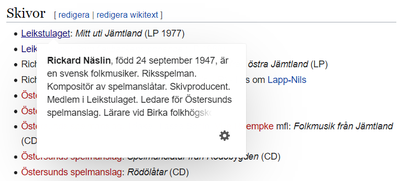 Here is beautiful music from Jämtland. They don’t have their own Wikipedia article. Currently, the Wikipedia article about the band points to Rickard Näslin. The band had these members: Olle Simonsson, Rickard Näslin, Ville Roempke, and Göran Andersson. I do think that this is not an exhaustive list of band members.
Here is beautiful music from Jämtland. They don’t have their own Wikipedia article. Currently, the Wikipedia article about the band points to Rickard Näslin. The band had these members: Olle Simonsson, Rickard Näslin, Ville Roempke, and Göran Andersson. I do think that this is not an exhaustive list of band members.
It appears that Lekstulaget was a loosely connected group. It did not start on a specific day and did not dissolve on a specific day. Who was a member and, most of all, the "leader"? This might be one of the reasons that there is no Wikipedia page about the group. If no one on his own has the "right" to the group’s name, how is the group’s legacy looked after? It appears that Rickard Näslin is the person of the group that tries the most to keep the name of the group alive, especially on the Internet. He is running a website Kulturlokalen which is about an (art) studio located on Frösön.
On this website, I found stories in Swedish collected by Rickard about how Lekstulaget was roaming the landscape. It turns out the group did a great job recording and registering the tradition about to die out in the region. The group’s name can be written in Standard Swedish and in the local dialect Jamtska. That is why it has two names. There is plenty of writing about the group in the local newspapers before the Internet.
Ville Roempke came from Stockholm, and he traveled around in Jämtland to record the old spelmän still in life. The question then is what you do after you recorded the old person playing a tune? There existed some practice in the old tradition that the art music establishment around 1970 did not approve. Usually, the establishment corrected the traditional "irregularities" while turning the tunes into sheet music. Ville did not like this practice. He wanted to keep the living tradition alive without changing it to modern art music standards. Well, Ville came from Stockholm, so he was dismissed by some Jämtlänningar.
Nevertheless, I think it should be possible to put together a Wikipedia page about Lekstulaget in English so that Rickard can still also have his own Wikipedia page.
Norrlåtar; Folkmusik från Norrbotten
This is a kind of raw folk music from Norrbotten. You can hear the musicians shout while playing; that is precisely how it is supposed to be. They are tapping with their feet as well. The sound technician has done all he can to filter the tapping, but there is a faint tapping sound. Had the sound technician got it as he wanted, he had duct-taped the musician’s mouths as well. Listen to Schottis från Båtskärsnäs to hear shouting and stomping glory!
The group was active between 1974 and 2004. In the early days, the group researched music traditions in Norrbotten and Tornedalen. That is where their roots come from. Later they introduced "world music" into their repertoire.
During the 1970s, it was the right thing to go out in the countryside and visit the dying generation of genuine tradition holders. Then the material was recorded, and it was time to turn this into CDs and sheet music and teach the stuff to younger musicians. During the early 00s, the steam from the folk music steam engine had lost the pressure. What should we do now? I think we are still waiting for what should be done now. The people scavenging the countryside for treasures are still teaching music in Sweden and other places worldwide, but they are now 50 or 60 years old and eagerly await their pension.
The music industry has converted from CD production to festival production and streaming service. I don’t think the Swedish folk music people have followed suit, aside from Sågskära, obviously, running a large festival.
The music itself and the use of the music is still the same. You gather, and you dance at dance events, or you gather at spelmanstämma, but for how long will these events take place?
The most recent members of the group were: Jan Olofsson, Mikael Segerström, Hans Sandin, Lars-Gunnar Omberg, and Björn Sjöö.
The music tradition from the northern part of Sweden is the tradition of the farmers; it is not the tradition of the Sapmi. It appears to me that there is a missing story on how the northern part of Sweden got colonialized and the indigenous Sapmi people were pushed towards the north. I cannot recall that this aspect of the history of northern Sweden is sung about in any songs or otherwise present in the general consciousness. That Jämtland has been Norwegian is something people are aware of.
Lapp-Nils had his origin in the Sapmi culture but was also fluent in the Swedish farmer culture. He was an influential musician. Lapp-Nils is perhaps an example of a Sapmi that could assimilate to the Swedish culture only because he was a talented violinist.
Malungs Spelmanslag, Malungs spelmanslag 50 år
A spelmanslag is a group of amateur musicians, this group is from Malung. The longer musicians play in the group, the less amateur they become, and this group has a long tradition, so it sounds good when they are playing. This album is from the group’s 50th anniversary.
Here on this album, you got many musicians playing together. I have been to several spelmanstämmor, where all musicians come together and perform allspel, and at best, it can sound like when listening to this album.
Often on a spelmanstämma, tunes are played with many musicians together, under the leadership of a conductor. The conductor is a well-respected Spelman from the region standing in front of all the musicians giving instructions on playing the music.
We take it from the beginning, namely, how do all the musicians get to perform the allspel? Even this has its traditional forms. Usually, this is a festive moment when people are dressed in their traditional costumes. Each region got its own costume. Even I got my Jämtland costume. The buttons are polished neat and clean, and you are all gathered at a location, like the local open-air museum. Then all the people march from the local open-air museum to the local Church or vice versa. Either that or from one prominent place in the village to another. There is usually a stage at the endpoint of the march.
The marching is not just done like walking randomly; it is done while playing music in the same tempo as walking.
The different groups arrive at the end, and the stage is slowly filling up with more and more musicians. For each group arriving, the people on stage start playing the tune that the arriving group is playing.
There are several tunes designated just for marching. You march for different reasons, like gathering for a wedding, etc.
These events occur at a Spelmansstämma in various places around Sweden in the summer.
Now, when you are standing there among all the musicians, it sounds like this album. The musicians here on this album have trained a lot, so this sounds really good.
Some songs on this album did not qualify for this list because they sounded more like "Big band" music than a spelmanslag. When you listen to music from Sweden, there is sometimes the question "what was the purpose" of making the album: All the music from a region will go on the album, or everybody in the group will play on the album. That is all fine, but I have my own reason for the songs on my playlist. The songs here are supposed to play well together. I am more of a music editor when putting this list together rather than just collecting as much as possible from Sweden. I want the songs to work together in shuffle mode. Besides, all church stuff and non-traditional instruments like piano did not qualify for this list. I don’t want too much bass on this list as well. If you miss something on this list, you can always make your own list.
Hazelius Hedin, Sunnan
This is an album of Esbjörn Hazelius & Johan Hedin. They have a website!
Esbjörn Hazelius plays Cittern, Violino d’amore and Guitar. He is related to Artur Hazelius that founded Skansen and Nordiska museum in Stockholm. He grew up in Skåne.
Johan Hedin plays Nyckelharpa, Octave Nyckelharpa. He grew up in the village Trekanten near the city of Kalmar in Småland. He became riksspelman 1992.
These artists have also played together with Ale Möller on other constellations. In a way, I think their music is not genuinely originating from one region of Sweden. They play all sorts of music with different origins. Due to their background, I can choose somewhere between Småland and Skåne, but I decided on Skåne.
Ebjörn’s relation to Artur Hazelus places Esbjörn firmly in the roots within the elite of Swedish culture. Artur opened Skansen on 11 October 1891, five years before Svante Arrhenius published his scientific article about global warming due to carbon dioxide and predicted that by doubling CO2, mankind would go extinct. This was thirty years before women got the right to vote in elections in Sweden. Skansen plays a vital role in forming a national identity in Sweden. It is here that the trademark of Sweden starts to take form.
Sara Parkman & Samantha Ohlanders; Martriarkerna
This is a band with Sara Parkman & Samantha Ohlanders. Sara has her roots in Ångermanland and Samantha in Hälsingland. Since Sara is the first name on the album, I decided to put the origin of this album to Ångermanland, kind of random.
Their music is dynamic and energetic, lovely! There are several other female artists featured on this album as well:
Ellika Frisell (From Stockholm playing in the Boda and Orsa tradition), Lena Willemark (From Älvdalen, Dalarna), Agneta Stolpe (Singer and herding caller etc from Äppelbo, Västerdalarna), Marie Selander (From Nacka, Stockholm). Susanne Rosenberg (From Stockholm).
This album has beautiful music by only women. The name of the album is the matriarchs. I suppose that is a description of the artists that worked on this album, and they are leading personalities in Swedish folk music tradition.
One song that I think sticks out more than the rest is Nattåg with Marie Selander. She got her roots in the progressive music of the 1960 and 70s "Progg." Now she is an old lady, just like Heidi Fried, a survivor of the holocaust. This album came in 2017, and the year after Ulf Kristerson, the leader of the conservatives party in Sweden, promised Heidi Fried in 2018 that he would never ever cooperate with the Nazi parties operating in Sweden. When I wrote this during the Covid-19 pandemic, he was preparing for a future coalition with the Swedish Nazis. Marie was spot on with the text in this song.
On the track Vagabond, you can hear feet stomping. I like that; it makes the music more authentic for me.
Mats Edén; Läckerbiten
Mats Edén come from Södertälje, Stockholm. He plays music in the Värmland tradition, part of the band Groupa. Mats is also a member of The Royal Swedish Academy of Music.
If you were to generalize, and of course, you want that, there is no way to understand the world without sweeping generalizations. I see a couple of epochs in Swedish folks’ music. The violin as an instrument emerged around 1530 in Italy. The violin appeared in Sweden in early 1600. In 1800 it became the main instrument in Sweden. I suppose that from late 1700 you could probably find the first spelmän in Sweden. It is fair to guess there was music before the violin. People were singing and playing flutes etc., and that the violin assimilated into the original tradition during mid-1750 and onwards.
There is something to be said about Sweden’s mania of registering and mapping things. Carl von Linne and his mapping of the natural world did not emerge out of nothing. Like Carl started to create a system for cataloging nature, there are within the folk dance and music also a vigorous registration that has taken place. This research culminated during the 1970s. There are thousands upon thousands of tunes noted on paper and recorded material, such as Ville Roempke in Jämtland.
I found recordings from this era while compiling this playlist. Documentary recordings of spelmän talking before the tune doesn’t qualify to be added to this playlist. The recording is, so to speak, too lively. From around the mid-1970, the question became: How do we make this treasure into a polished product? The recording industry transformed the performed folk music. In that process, the music had to be cleaned. The musician recorded in a concrete bunker with a ducktape over his mouth. Gone was the shouting "Ttjohoo" and stomping with the feet on the wooden floor. Although the violinist can be a prize-winning virtuoso, the recording can become impersonal and somewhat plastic.
Sorry Mats, this album is from the plastic epoch of Swedish folk music. Mats album Mats Edén; Alvaleken is much more alive.
The next epoch is right now in the making because people don’t buy CDs anymore. Music is streamed. Many artists are left in a state of confusion about dealing with this. This playlist is obviously an example of the new epoch. The music is available if you pay for a subscription and YouTube (or other streaming media platforms). Then you can listen to this list at your heart’s content.
Per Hans Olsson, Leif Göras, Stig Ivars & Per Gudmundson; Rågången
The album name Rågången means border. The border between villages as well as plots.
Per Hans Olsson (From Rättvik, Zorn badge in gold), Leif Göras (From Rättvik), Stig Ivars appears to be unknown to Internet, Per Gudmundson (From Falun in Dalarna, plays in the Rättvik tradition, Zorn badge in Gold)
I suppose Stig Ivars is the shy guy in the group, just as a guess. Can it be the second from left on the album photo?
Per Gudmundson plays with Frifot, Lena Willemark, etc., also represented on this list. Per Hans Olsson is playing with many others but not on this list (so far).
Kongero; Bakvända världen
Kongero means spider in the Jämtländska dialect and the group consists of Lotta Andersson, Emma Björling, Anna Larsson and Anna Wikenius. Lovisa Liljeberg left the group in 2016.
This album Bakvända världen came 2011. The title means the reverse world. It was the second album of the group.
Emma is från Jämtland and hence the name of the group. Lotta is from Sundsvall, Medelpad. Anna Wikenius is from Sandviken, Gästrikland. Anna Larsson from Hammarö, Värmland. The members are from mid/north Sweden, so to speak.
Since I got so few albums from Medelpad on this list, I thought it was better to designate Kongero to Medelpad, although that is only partly correct.
On this playlist, I included albums from the competing group Kraja. Both Kraja and Kongoro sing Swedish lilt songs and songs with actual words. There are words in Swedish traditional lilt singing, but they are nonsense words used to utter the melody and the rhythm. Before the instruments, this way of performing music can be the first kind of music in Nordic countries. It is hard to tell.
In Swedish, it is called "Tralla" to lilt. It is not very common. You notice this, especially when looking for the Wikipedia page about Swedish lilt singing. It is missing when I write this.
Four female voices correspond well with two violin players. A violin can be played on two strings at the same time. That makes four voices as well. A violinist cannot play any note, the notes need to be on adjacent strings, and the fingers need to be put on the neck. These four girls don’t have any of these restrictions. This way of singing is also called polyphonic.
Where is the album where both Kraja and Kongoro are singing together?
I have the feeling that Kraja is singing more sparkingly. I made an unscientific comparison of the two groups. I sampled a couple of sections of each song and then analyzed the frequencies. The diagram to the left is Kraja, and to the right is Kongoro. The circle shows more volume on higher frequencies, which gives a sparkling sensation. It also shows the rectangle that Kraja has mastered louder and more balanced. Just saying.
The Kongero singers are singing at high frequencies, but they are kept lower during mastering.
Kongero; No 3
This album with Kongoro, No 3 came in 2014; it is (you guessed it) the group’s third album. I did not add the albums to the playlist chronologically or alphabetically, but that does not matter; you play the tunes in any order you like.
Here it is more of the polyphonic singing from the group.
Kongero; Kom
Here is the fourth album of the group. Obviously, as time progresses and old songs have been sung either by Kongero or competing groups, it is harder to find traditional songs to perform. There are some lovely old songs on this album. I don’t think the group will run out of material anytime soon, though. There exists a vast archive of traditional songs at Statens musikverk. That website’s name sounds like a joke, but it is not. The website of Statens Musikwerk is a joke, though. At the time of writing, it is not working at all. When that has been fixed, you will probably be able to search for old traditional Swedish songs from anywhere in the world.
Overall, the tunes on this album are more modern than the previous albums, unless they had TV sets a long time ago, but I don’t think so. This list is focused on traditional Swedish Folk music, thus the music that was played a long time ago. That said, I am not focussing on the age of the music on this playlist; if the music is new but performed in the old tradition, it qualifies as well. That is why the story behind the tune or song is essential (to me).
The music was used differently before. For many people, it was the only means of entertainment. It was used together with various different occasions and even rituals. I would like to know more about the little stories around a song and tell it if I knew it. So if Kongero writes a song at the kitchen table and performs it at festivals solely to make a product, it is less interesting to me.
If they have a self-composed song that came about because of any mundane reason and sung at a particular situation to gather people, it signals that something will happen or has happened. The song can inform others of mistakes they should not make and frustrations about, for example, the impending climate crisis. That sort of thing, then there is a story to cling on to, then the music adheres to much of the tradition of Swedish folk music; the usefulness of music.
Perhaps Kongero can collaborate with the Matriarchs to broaden the songs and get them out the TV sofa?
Ellika Frisell; Prat / Talking
Ellika comes from Stockholm, but she plays music in the Orsa and Bingsjö tradition, Dalarna. The album art is the photo of two people at perhaps a café. I suppose one person with the back to the photographer is waving their hands while talking. The album’s name is Prat/Talking. That is a very international name. The lady not waving with her hands is Ellika herself.
Ellika is a Royal Swedish Academy of Music member, just like Mats Edén. She is a very talented musician, just like Mats, and I see similarities in how well polished her music sounds. Earlier, talking about Mats music, I said it can be so polished it feels like plastic. Also, in the case of Ellika, there are plastic tendencies, but when I listen to her music, it is a little more alive than Mats music. Don’t understand me wrong; it is beautiful to listen to Mats playing, but I feel that Ellika has a little more warmth in her playing. Besides, I later found Mats playing in more lively on other albums later in this playlist.
|
Ack om jag hade, polska efter Gössa Anders / Polska efter Gössa Anders |
Kraja;Under himmelens fäste
Here I am back at the group Kraja with an album from 2008. The album art is a picture of the girls biking where one of the bikes has the brand Marathon. It is a bike brand started in 1899 in Malmö by J. Bensson. The bikes do not have much to do with the music more than the girls are out and about. There is a shed with a metal roof in the background. The photo shows how happy you can be when biking around in the countryside, having a break from polyphonic singing. When biking in general, you got no problems with mosquitos, which is an important aspect.
This album was the second album that the group released.
When I was young, I once went to see a local group of three girls with red hair singing the song "En gång i min ungdom," and since then, I have been in love with that song, and I really fancied the girls too obviously. In the song text, the girl promised eternal loyalty that she did not live up to. I was never near having a girl promise eternal love when I was young. That only happened later when I met my wife. I still find it funny how I, as a young boy, could fall in love with girls singing about an unfateful girl. Was I not listening? This was the first time I heard three girls sing traditional polyphonic acapella. It was special.
I still have the question of whether Kraja is more sparkling than Kongero. I already touched on this subject when I wrote about the album "Bakvända världen" by Kongero. Both groups sang the song "Limu limu lima," and Kongero sang that same song on their album Kom. The song is actually a little too evangelic to my liking, so I removed it from my playlist. Apart from that, I will try my unscientific comparison method one more time, but this time I am comparing with the same song.
It is still an unscientific approach, but it is slightly more exact. You see the Kraja version on the left side and on the right side Kongero. Kongero peaks at a higher volume in the mid-tones. Kraja got more balance in their mid-tones with several peaks, but they do not have a higher volume. Between 2kHz and 6kHz, Kraja got a dip coming back at 6 to 13 kHz. Kongero also peaks between 6 and 13, but it is a narrower peak, and I think that is where the sparkling is missing. Kongero got more bass.
For me, I now settled my curiosity on this sparkling matter with this analysis. Yes, Kraja sparkles.
The song Bonden och Kråkan is about a farmer shooting a crow. Then the rest of the song describes what products can be made from the crow. It is an extensive list starting with 15 candles ending with a large ship, and the bishop wonders what happened to the crow. There are more variations of this song. Triakel has the sång Kråkvisa where the crow produces 15 pairs of shoes. A ship is made, the biggest on Kattegat.
|
En gång i min ungdom / En gång i min ungdom / Schottis efter Knaft Jonke |
Anders Thunell & Olof L Mjelva; Uppspelt
This is folk music from Härjedalen. Sweden got the region back from Norway at the treaty of Brömsebro, and I wrote about that before talking about Kjell-Erik Eriksson and his album Offerdalslåtar.
On the album art, two men are standing in the snow, as you do in Härjedalen, but one is tired, resting on the other man’s shoulder. I think the tired person is Anders. Have you ever tried leaning on someone like that? He is not only resting, but he is also somehow leaning backward, or the photo is tilted. I suppose it is cold and somewhat challenging to play violin in the cold. That must be why one man is warming his hand in his pocket. The more plausible reason he got his hand in his pocket is that he has the remote control to his camera in the pocket. They both have violins in their hands; although one is also well known for being a Hardanger fiddler, I think it would be the person to the right that is Olav.
This album is the second album of this duo. When I try to find information about Anders, I cannot find it on Wikipedia. I found an article about Anders in the local newspaper Tidningen Härjedalen. Anders lives in Sveg. He is dreaming about bringing out the music of Härjedalen around the world. Well, Anders, how about making a website or getting an article about you on Wikipedia, preferably in English?
Anders was born in 1981, started studying software engineer but stopped that project. He got a job instead. When Anders was young, he got fascinated by violin music when he visited a local Bygdegård.
The article then informs about the album Anders recorded with the musician from Röros, Olav Mjelva. At the time of writing, Olav got a page in the Norwegian Wikipedia, but it is not that complete.
It turns out that with the second album, it is done for a while regarding collecting and bringing out the traditional music of Härjedalen. After this album, Anders will study astronomy and compose his own music.
Here are two musicians who love music (and astronomy) so much they got no time to spread their work with a website, a Wikipedia page, etc. It is a shame, actually.
Now over to the music of Anders and Olav. It is very well played, and you can hear their stomping feet! It warms my heart to hear it. It is a joy to hear Anders and Olav play.
|
Tune |
Musicians |
|
Anders Thunell & Olof L Mjelva |
|
|
Anders Thunell & Olof L Mjelva |
|
|
Anders Thunell & Olof L Mjelva |
|
|
Olof L Mjelva & Anders Thunell |
|
|
Anders Thunell & Olof L Mjelva |
|
|
Anders Thunell & Olof L Mjelva |
|
|
Anders Thunell & Olof L Mjelva |
|
|
Anders Thunell & Olof L Mjelva |
|
|
Anders Thunell |
|
|
Anders Thunell & Olof L Mjelva |
|
|
Anders Thunell & Olof L Mjelva |
|
|
Anders Thunell & Olof L Mjelva |
|
|
Anders Thunell & Olof L Mjelva |
|
|
Anders Thunell & Olof L Mjelva |
|
|
Anders Thunell & Olof L Mjelva |
|
|
Anders Thunell & Olof L Mjelva |
|
|
Anders Thunell & Olof L Mjelva |
|
|
Anders Thunell & Olof L Mjelva |
|
|
Anders Thunell & Olof L Mjelva |
|
|
Anders Thunell & Olof L Mjelva |
|
|
Anders Thunell & Olof L Mjelva |
|
|
Anders Thunell & Olof L Mjelva |
|
|
Anders Thunell |
|
|
Anders Thunell & Olof L Mjelva |
Låtar från Rättvik, Boda & Bingsjö
This is a collection of tunes from Rättvik, Boda, and Bingsjö. These three villages lie really close to each other. The culture from this little tiny bit of Sweden is enormous. They must have had a lot of fun here playing music at every spare moment.
I do want to say that some of the tunes are heavily decorated. You can even hear that some decorations have internal decorations, a little like fractal images with more details if you just look closer. Sometimes you wonder where the decoration mania will end? One result of this style is that it is obviously difficult to play these tunes with more people in a group. Perhaps that is why this is primarily a solo album. Although much of the Swedish folk music tradition got many inclusion and team-building elements, there are opposite factors. Some think you are a better Spelman if no one else can play the music. There has been a great competition between the Spelmän in these villages, which shows how the music sounds.
The tune Vallåt after Hjort Anders mother, played by Nils Agenmark, undeniably gives you associations with a leaf fluttering in the wind.
Perhaps I don’t sound enthusiastic about this genre of Swedish folk music, but that is not true. However, the music is so complicated, and besides, I am not that elitist that I get pleasure from playing this music.
I don’t think I would like to have chairs that look like that. Especially the male version gives me bad vibes.
|
Tune |
Musicians |
|
Anders Blank |
|
|
Anders Blank |
|
|
Anders Blank |
|
|
Anders Blank |
|
|
Anders Blank |
|
|
Anders Blank |
|
|
Erik Rojas & Olle Lovas |
|
|
Erik Rojas |
|
|
Erik Rojas |
|
|
Jonas Rojas & Pahl Olle |
|
|
Jonas Rojas & Pahl Olle |
|
|
Jonas Rojas & Pahl Olle |
|
|
Jonas Rojas |
|
|
Goras Anders Persson & Leif Goras |
|
|
Pers Erik Olsson & Pers Hans Olsson |
|
|
Pers Erik Olsson & Pers Hans Olsson |
|
|
Pers Erik Olsson & Pers Hans Olsson |
|
|
Pers Erik Olsson & Pers Hans Olsson |
|
|
Pers Erik Olsson & Pers Hans Olsson |
|
|
Pers Erik Olsson & Pers Hans Olsson |
|
|
Pers Erik Olsson & Pers Hans Olsson |
|
|
Pahl Olle |
|
|
Pahl Olle |
|
|
Pahl Olle |
|
|
Pahl Olle |
|
|
Pahl Olle |
|
|
Pahl Olle |
|
|
Pahl Olle |
|
|
Pahl Olle |
|
|
Pahl Olle |
|
|
Pahl Olle |
|
|
Pahl Olle |
|
|
Nils Agenmark |
|
|
Nils Agenmark |
Folk Tunes From Västerbotten
Västerbotten is a county on the west side of the Gulf of Bothnia. On the other side of the gulf, on the east side, you find Österbotten, but that is in Finland, beautiful when there is logic in things.
Is it not remarkable to have the album text in English? There are several albums in this playlist with English names. I wonder how they were thinking when deciding on doing that. Is it to appeal to the greater audience, but is that really necessary? Look at how IKEA is selling things with Swedish names. Can it be a feeling of a dwindling interest at home for this treasure of culture? It is sad, but it is also reality. Long ago in Sweden, folk music was the only means of entertainment. Young people in Sweden got a smörgåsbord of entertainment to choose from other than learn to play the violin even if they are tidsoptimists.
The most plausible explanation of the English naming is that the initiative of the album, and the name, came from Sonet Records. That company was sold to a company, and so forth. Later in this playlist, I added another album from the "Folk tunes from" series: Folk tunes from Jämtland.
When my wife and I studied at Umeå University, sometime between 1990 and 1993, we went to a Spelmansstämma in Jämtland. We did not have a car, so we went there by public transport. We met people from Västerbotten, and they offered us to go back to Umeå with their touring bus. On that bus were many of the people playing on this album. Sören and Holmfrid were undoubtedly on the bus. We played music, as you do when you are a Spelman traveling on a bus. The bass player had the back seat of the bus. Others were scattered in the seats at the back of the bus. There was even a four-seat table group. Buskspel on a bus, can you imagine? It was a great experience!
There is a tune on the album, the Waltz after Fritz Nystedt, that has sound in it as if it is inspired by the car horn of a big old American car; you cannot miss it! The music on this album is played and sung by different persons and groups. That makes it lively; there is both solemn play and joyful play.
|
Tune |
Musicians / Group |
|
Umebygdens Spelmansgille |
|
|
Umebygdens Spelmansgille |
|
|
Lycksele Spelmanslag |
|
|
Elsa Siljebo |
|
|
Lycksele Spelmanslag |
|
|
Lycksele Spelmanslag |
|
|
Umebygdens Spelmansgille |
|
|
Umebygdens Spelmansgille |
|
|
Burträsk Spelmanslag |
|
|
Erik Eriksson |
|
|
Erik Eriksson |
|
|
Erik Eriksson |
|
|
Burträsk Spelmanslag |
|
|
Burträsk Spelmanslag |
|
|
Holmfrid Ericsson |
|
|
Allan Carlsson & Lennart Jaktlund |
|
|
Sören Johansson |
|
|
Sören Johansson |
|
|
Burträsk Spelmanslag |
Quille Spelmanslag; Polskor Och Andra Låtar Från Norra Bohuslän
This album was released by Quille Spelmanslag in 1975. It contains tunes from Bohuslän. This is a group of four girls and man: Bodil Hägg from Bullaren, Sven Alfredsson, Rose-Marie Gunberg, Marie Stensby, and Ylva Larsson. The album is from long before the Internet and Compact Disk was invented. I found a fuzzy image of the sleave. It is so sweet, full of information, and barely readable.
The album had 20 tunes, but only 5 tunes qualified to my playlist. The other tunes had an overly enthusiastic guitarist playing as well.
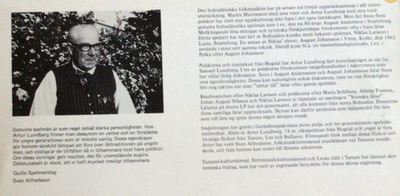 Quille Spelmanslag set out to learn the songs from Artur Lundberg. His speciality is triplet polskor. Artur learned many of his tunes from his dad Samuel Lundberg. There are irregularities in the tempo in three tunes, which caused lively discussions. In the tunes of other Spelmän, there are similar peculiarities, but you have to be cautious before you correct old music according to modern taste.
Quille Spelmanslag set out to learn the songs from Artur Lundberg. His speciality is triplet polskor. Artur learned many of his tunes from his dad Samuel Lundberg. There are irregularities in the tempo in three tunes, which caused lively discussions. In the tunes of other Spelmän, there are similar peculiarities, but you have to be cautious before you correct old music according to modern taste.
This was the debate going on during the 1970s. Ville Roempke agreed on this cautiousness. I wrote about that when talking about the album of Lekstulaget.
All tunes from this album are also available in the book Svenska låtar from Bohuslän.
The recording was done in Gerlesborgs School of Fine Art’s large atelier. Three generations of Spelmän took part in the recording. Artur Lundberg was the oldest 74 years old, riksspelman from Hogdal. The youngest was four 16-year-old girls from Tanum, Lur, and Bullaren. The connecting link between Artur Lundberg and the girls was Sven Alfredsson, a teacher in music interested in folk music, working at Tanums music school.
The year after, Quille Spelmanslag went to the US for a tour with dancers from Lysekils Folkansgille, but the group had partly already other members by that time.
If this album were from 1975, then now, at the time of writing (2021), Artur had been 121 years old, and the girls are 62. Time flies when you are having fun. What happened to the girls? I think Bodil more or less stopped playing the violin. Rose-Marie Gunberg got the Zorn badge in Bronze 2010! Marie Stensby was very talented and got a Zorn badge in silver already 1975, and in 2002 she got the same badge in Gold. Then she moved to the city I grew up in, Strömsund, and became an outspoken racist and even sympathized with right-wing terrorism. Perhaps Ylva stopped playing the violin. I cannot find many traces of her.
What happened to the music teacher Sven Alfredsson? 2005 he got Tanums culture-price for leading the choir "Ärtor och Fläsk" for over 30 years and registering folk music. That means he was busy with the choir already around 1975. I believe I have seen traces of Sven Alfredsson (or someone with the same name), who died in 2017 at the age of 92, but this is a very faint trail on that.
Svante Lindqvist & Markus Falck; Norrbottenslåtar - Svensk folkmusik i Norrbotten
These gentlemen play very beautifully! Svante Lindquist, at the back of the album photo. He is a remarkable person, playing music and a writer of literature and drama. How is it possible he does not have a page in English on Wikipedia? He has been a Riksspelman since 1977, Zorn silver badge, and then Zorn gold medallist in 2011, and then he got a gold medal, size eight from the Swedish King in 2020.
Markus Falck got the Zorn badge in silver 2000. He looks a little shy in the photo; in any case, he doesn’t know where the camera is, or he avoids looking into the lens. It can also be that he is struggling to hold back his newly applied portion of Swedish Snus. It is a moist tobacco product that you apply under the upper lip. It can also be contained in a tiny paper bag, but I doubt he used the bag version when this photo was taken; it takes more effort keeping loose Snus together, "snus"-management.
This duo is also part of JP Nyströms band, where the pedal organ plays an important role. Perhaps the pump organ is a very original instrument in Norrbotten. Unfortunately, when that instrument is played heavily, it is not qualifying to this playlist, so here I have a selection with only gold medal music from this album, i.e., violin music. Triakel has a lot of pump organ music where the organ is not dominating; those tunes are still on this list.
Mats Edén; Alvaleken
This album came in 2021; it has the subtitle "Från de Edénska samlingarna," meaning from the family collection. Mats got a large production of albums before this, and I wrote about his work before. In many of his earlier albums, he is making what I am calling plastic music. I believe that plastic folk music was recorded from 1980 until the 1990s. Plastic music is a metaphoric expression. I make a parallel between music as a disposable plastic product, created in an industrial process where synthetic material is pressure-molded into long series of disposable products. No hissing, shouting, stomping with the feet, nor recording imperfections.
With this album, we have a totally different product. Here, I would say that Mats is carving out the music by his own hands with his Morakniv from a floorboard of his ancestors’ house. It is still played with perfectionism, but it is alive, handmade, and connected to the roots. The sound technicians have not sterilized this album. I love it.
The tune Krafthalling has truly male energy. Halling is a solo dance to be danced by men, so I suppose that makes sense. The song starts off a little disturbed. When it eventually gets going, it speaks for itself.
Folk tunes from Jämtland
Here is a collection album with artists and tunes from Jämtland by Sonet records. We previously had album 9 of this series in this playlist. I have written before about the artists on this album: Lekstulaget; Mitt uti Jämtland, and Kjell-Erik Eriksson; Offerdalslåtar.
Ville Roempke and Håkan Roos open the album with Skravapolskan after Erik Nilsson, where a clarinet is also playing. There is a soft stomping. The clarinet is almost playing cheering sounds, or is there a bird singing along in the background? Perhaps the surname Roos is prevalent. I tried to find out if Peter Roos were related to Håkan Roos on this album, but instead, I found another fantastic story about how Lekstulaget was formed (this is a page from Rickard Näslins’s website).
Lekstulaget are playing a Shottis after Per Eriksson. Here it appears as if someone is stomping with flip-flops on a concrete floor. The material of the footwear is smacking helplessly with a high pitch sound. A Viola with a bass sound and a Zither is playing in this tune. Lekstulaget is also playing Brudmarch från Jämtland. They are totally entitled to perform this tune. This is a standard tune to be played at many Spelmansstämma in Jämtland. They also plays Hökörarvalsen by Anders I Logårn, meaning the hay drivers walts by Anders in the barn. That sounds like a legit name; hopefully, he had an excellent time between driving around with the hay and living in the barn. By listening to the tune, Anders had to drive up and down. I suppose Anders had to drive back and forth a hill when he came up with this tune.
Rickard Näslin and Göran Andersson are playing Rapp-polska and Polska after Karl Lignell. The wooden shoes guide the tune’s tempo with a sturdy stomping on the wooden floor!
Ville Roempke and Olle Simonson plays a Polska after Ante Falk. The violinists are stomping with their feet and breathing heavily, no wonder because it is a complex tune. To play these tunes, you usually stand up, and the whole body has to move with the tune’s rhythm.
Kjell Erik Eriksson is performing a Lapp-Nils polska solo after Olle Falk. Kjell Erik is a virtuosos violinist, which is always a base requirement for the Lapp-Nils tunes. I personally believe that Lapp-Nils got his tunes from a common blackbird due to the complexity of the Lapp-Nils tunes.
|
Tune |
Musicians / Group |
|
Ville Roempke & Håkan Roos |
|
|
Ville Roempke & Håkan Roos |
|
|
Lekstulaget |
|
|
Rickard Näslin & Göran Andersson |
|
|
Ville Roempke & Olle Simonsson |
|
|
Rickard Näslin & Göran Andersson |
|
|
Lekstulaget |
|
|
Ulf Andersson & Mats Andersson |
|
|
Ulf Andersson & Mats Andersson |
|
|
Ulf Andersson & Mats Andersson |
|
|
Lekstulaget |
|
|
Lekstulaget |
|
|
Lekstulaget |
|
|
Kjell Erik Eriksson |
Rickard Näslin och Göran Andersson; Spelmanslåtar från Östra Jämtland
This album is from 1979.
Here the album art presents the two Spelmän playing on the album, but when looking at the tunes, most of the tunes are entitled to Rickard, and then Göran is mentioned as a featured artist. There is only one tune where Göran is the first name of the tune.
A featured artist is usually a guest artist, but when you look at the album art, it is not looking like Göran is a guest artist. In my humble opinion, there is some odd, peculiar twist hidden in being featured on your own album. It is like being a guest in your own house. Can it be as simple as that Rickard paid for the album, or this glitch happened when the album was transferred to the streaming platform?
The music sounds pleasant, and this album has a subtle stomping and a slight reverberation effect. You can hear that every tune starts with a click sound if you pay attention. This cannot be intended, but Göran and Rickard can play very well!
|
Tune |
Musician |
|
Rickard Näslin |
|
|
Rickard Näslin |
|
|
Rickard Näslin |
|
|
Rickard Näslin |
|
|
Rickard Näslin |
|
|
Rickard Näslin |
|
|
Rickard Näslin |
|
|
Rickard Näslin |
|
|
Rickard Näslin |
|
|
Rickard Näslin |
|
|
Rickard Näslin |
|
|
Rickard Näslin |
|
|
Göran Andersson |
|
|
Rickard Näslin |
|
|
Rickard Näslin |
|
|
Rickard Näslin |
|
|
Rickard Näslin |
|
|
Rickard Näslin |
|
|
Rickard Näslin |
|
|
Rickard Näslin |
Triakel; Sånger från 63°N
This album came out in 2004; it is the fourth album of Triakel. This album has its own English Wikipedia page! The excellent feature of this playlist is that I can exclude songs that I don’t like. I removed a couple of songs about church stuff from this album. With this modification, the album is enjoyable.
63°N is the GPS coordinates below Östersund, kind of, and I suppose the band has its roots there. There are mainly two GPS coordinate systems: The Imperial and the metric GPS system, where the Metric can be recognized with a number, a dot, and several decimals. The imperial has circles, single quotes, and double-quotes. Luckily the latitude is the same number between the two systems, so this album is relevant for Metric and Imperial listeners.
I find the song "Bli som far" (Become like dad) especially funny. Here is my translation of the song; I changed the wording and did not keep syllable rhythm but kept the words rhyme and the general meaning of the stanzas. Enjoy these words of wisdom from Triakel:
It is like this, my dear little son. If you want to be as capable as another;
Carefully note the direction of the wind and keep a good relationship with the people of power.
Just like your dad, you will eventually become a compromiser.
Like when your father becomes ill, the belly will be soothed with an alkalizer.
You get nothing for free; you pay for every form of yield.
Ideals will wear out when you grow up, and without trousers, you walk with your butt revealed.
Just do like your father and get a prosperous prognosis because if you share your boss’s interests, you will inherit your father’s house and neurosis.
Swallow your anger, betrayal, and agony; you will find comfort at the nearest pharmacy; against any tackiness and mockery.
You will become like your dad, where your dad went, you will also go like the wind was blowing him it is also is blowing you.
Swallow your anger when the power crushes your feet. You live in a democracy and can decide how to be thrown out on the street.
You will become like your dad, where your dad went, you will also go like the wind was blowing him it is also is blowing you.
The song I Jamtlann is sung in the dialect spoken in Jämtland. One of the strophes claims that it is easy to live in Jämtland. That is a lie; it is harsh to live in Jämtland.
Triakel; Ulrikas minne (Visor från Frostviken)
This is the fifth album of Triakel, released in 2011. You might think I am a fan of Triakel because I added four of their albums to my playlist. Yes, I am a fan, especially after removing the evangelical material. This album has a Wikipedia page in Swedish. Frostviken is an area in north Jämtland.
In the album picture, Emma is standing in the middle; she plays violin and is singing. Like the feminist I am, I like it when the strong women are standing in the middle!
Kjell Erik Eriksson, with the typical Swedish Snus look on his face, is standing on the right side of Emma, and he is playing the violin. He has won both the Silver and Gold Zorn badges. Janne Strömstedt plays pump organ in elegant harmony with Emma’s song and Kjell Erik’s violins.
The material is based on songs from Ulrika Lindholm, 1886 – 1977. Ulrika recorded about 300 songs for Swedish Radio, and Triakel selected a few songs for this album.
Kråkvisa is similar to Krajas sång Bonden och kråkan.
Jernbergslåtar
This is a collection album of Gustav Jernberg, Herbert Jernberg, Andon Jernberg, and Sven Albäck. At least, that is how it looks like on the album art.
Some tunes sound like they have a documentary value rather than an art music value. That makes the tunes more lively, and I like that. It also intrigues me how the tunes got to this album. As usual, I start searching on the Internet to see if the Internet knows about these people are. Sven Albäck is well known. I even attended a course with him, so I know him. The Jernbergs have surprisingly little information about them on the Internet.
The best article about this album is a pdf with a photo of a Swedish article in Gefle Dagblad on 19 February 1987. There is thus a book about these tunes!
Here I will present a short summary of the article, my translation into English.
The book is about the Folk music of Gästrikland. Industrial work was of most importance in this area, so it was commonly thought that not much of Spelman traditions could be found here. The book contradicts the idea that Gästrikland had no Folk music traditions. Sven Ahlbeck, one of the authors, talks about this in the book’s preface. The music traditions did not vanish when people moved from the villages in the countryside to the cities. Instead, the traditions transformed.
It is this transformation that the authors have documented: Anton Jernberg, Sven Ahlbäck, Gunnar Ahbäck, Per Anders Hillbom, Per Gustav Jernberg, and Lena Åstrand worked on this book. It is an impressive research they carried out.
With the music as a starting point, they harvest the cultural history creating an essential addition to the history of Gästrikland. They show how peasant society meets the industrial society and how Folk music becomes an enclave that survives this transformation.
The central figure in this story is Gustaf Jernberg. The music is the tunes he and his sons played. Here are tunes by Herbert Jernberg, Anton Jernberg and Per Gustav Jernberg. There are tunes from 1700 to 1900 in this collection.
Gustav Jernberg 1881 – 1964. His sons were Anton Jernberg and Herbert Jernberg. Herbert died in 1975. At this point, Anton decided to write a book about the Jernberg tunes. Sven Ahlbeck had been a pupil and friend of Anton for a long time. Sven helped Anton with the book. In 1984 the book was finished, and in 1987 it was published with the help of sponsorship from the local Folk music association (Gästrikslands Spelmansförbund) and the County Museum of Gävleborg.
This album came in 2018.
|
Tune |
Musicians |
|
Gustav Jernberg |
|
|
Gustav Jernberg |
|
|
Gustav Jernberg |
|
|
Gustav Jernberg |
|
|
Gustav Jernberg |
|
|
Gustav Jernberg |
|
|
Gustav Jernberg |
|
|
Gustav Jernberg |
|
|
Gustav Jernberg & Herbert Jernberg |
|
|
Anton Jernberg & Sven Ahlbäck |
|
|
Anton Jernberg & Sven Ahlbäck |
|
|
Anton Jernberg & Sven Ahlbäck |
|
|
Anton Jernberg |
|
|
Sven Ahlbäck |
|
|
Anton Jernberg & Sven Ahlbäck |
|
|
Anton Jernberg & Sven Ahlbäck |
|
|
Anton Jernberg & Sven Ahlbäck |
|
|
Anton Jernberg & Sven Ahlbäck |
|
|
Anton Jernberg & Sven Ahlbäck |
Here ends this playlist, at least this version. I hope you enjoyed reading the stories!
Jens Malmgren
 I moved from Sweden to The Netherlands in 1995.
I moved from Sweden to The Netherlands in 1995.
Here on this site, you find my creations because that is what I do. I create.
